Keynote Forum

Jacob Adriaan Moulijn
NetherlandsTitle: Catalysis Engineering, a Multi-level Approach
Abstract:
Catalysis plays an important role in Chemical Process technology. It is the enabling technology for good chemical manufacturing processes. Catalysis as a discipline is not just a part of chemistry or physics but it also is an engineering discipline. Chemical and physical aspects are often scale-independent but in the engineering disciplines usually, the scale of the operation plays a role. In catalysis, both scale- independent and scale-dependent phenomena play a role. The reaction mechanism and structure of the active sites are usually scale-independent. Reactor design studies belong to the realm of chemical reaction engineering and are clearly dependent on the scale. In catalysis good contact between reactants and active sites is essential and the contact is, in general, scale-dependent. An integrated approach of catalysis research and development covering aspects of (bio) chemistry and physics and chemical reaction engineering, referred to as ‘Catalysis Engineering ‘, is rewarding. It is appropriate to distinguish three levels, the microlevel, focusing on molecules and catalytic sites, the mesolevel focusing on the catalyst particle and the reactor, and the macro level, considering the total process. This lecture focuses mainly on multiphase (G/L) systems.
On the microlevel, the scale-independent information is collected. Thermodynamics defines the possible window of operation and heats of reaction. Information on kinetics is crucial. On the mesolevel, fascinating developments are visible in the field of structuring the space. On the one hand, at the scale of the particle, optimal porosity (optimal hierarchal pore networks consisting of micro-, meso- and macropores) is important. On the other hand, structured reactors often outperform conventional reactors such as packed bed reactors. Pros of fixed bed reactors are high catalyst loading, convenience, low cost and often the possibility to use commercially available catalysts; cons are maldistribution, leading to non-uniform concentration profiles and even hot spots, internal diffusion limitations that might lead to reduced activity and selectivity. In a packed bed reactor hydrodynamics and mass transfer rates are coupled to particle shape and size. In a structured reactor, more degrees of freedom exist. For instance, dependent on the design, particle sizes can be chosen to be much smaller than those in packed beds. Structured reactors allow a high efficiency, based on a high mass transfer rate at relatively low energy dissipation. The low energy dissipation is related with the hydrodynamics regime: laminar rather than turbulent. In addition, in multiphase flow under most practical conditions, the flow pattern is that of segmented flow (called Taylor flow), resulting in large gas-liquid mass transport rates. Structured reactors have a large potential in Process Intensification. From a chemical engineering point of view, the intrinsic scalability of these reactors is intriguing.
It is not wise to carry out the research aimed at developing a good catalyst separately from the reactor design. It does not make sense to develop the best possible catalyst and to use it in an unsatisfactory reactor. Both the catalyst and the reactor should be optimal. In addition, it does not make sense to develop a catalyst and reactors without attention to the macro- level. In all stages of process development or improvement, the (conceptual) process design should play a role.
The benefits of a multi-level approach will be illustrated with practical examples.
Biography:
Jacob A. Moulijn is emeritus Professor of Chemical Engineering at the Delft University of Technology (19902007) and at the University of Amsterdam (1986-1990), visiting professor at several universities, including University of Delaware, USA, University of Gent, Belgium, National University of Singapore the University of Mumbai, India and Cardiff University, UK. During the nineties he was active in China for the UN-World Bank. He is active as consultant for several companies. He is the recipient of an Honorary Doctorate of the Åbo University, Finland and received several awards, including the BP Energy Price, and the NWO-STW ‘Simon Stevin Meesterschap’ award (2000). His research interests include: catalysis engineering, catalytic reactors, zeolitic membranes, kinetics, mass transfer, multiphase monolithic reactors, catalyst testing, petroleum conversion (Hydrotreatment, FCC, FischerTropsch), exhaust gas catalysis (soot from diesel engines, N2O removal, NO abatement, H2S removal, CFC conversion), selective hydrogenation, selective oxidation, photo- and electrocatalysis, catalyst synthesis by Atomic Layer Deposition (ALD), coal conversion (gasification, pyrolysis, combustion), and biomass conversion. He is (co-) author of over 750 technical papers, co-author of two books, editor of seven books, holder of several patents (reactor design, zeolitic membranes, catalyst development, biomass conversion).

Jacob Adriaan Moulijn
NetherlandsTitle: Catalysis Engineering, a Multi-level Approach
Abstract:
Catalysis plays an important role in Chemical Process technology. It is the enabling technology for good chemical manufacturing processes. Catalysis as a discipline is not just a part of chemistry or physics but it also is an engineering discipline. Chemical and physical aspects are often scale-independent but in the engineering disciplines usually, the scale of the operation plays a role. In catalysis, both scale- independent and scale-dependent phenomena play a role. The reaction mechanism and structure of the active sites are usually scale-independent. Reactor design studies belong to the realm of chemical reaction engineering and are clearly dependent on the scale. In catalysis good contact between reactants and active sites is essential and the contact is, in general, scale-dependent. An integrated approach of catalysis research and development covering aspects of (bio) chemistry and physics and chemical reaction engineering, referred to as ‘Catalysis Engineering ‘, is rewarding. It is appropriate to distinguish three levels, the microlevel, focusing on molecules and catalytic sites, the mesolevel focusing on the catalyst particle and the reactor, and the macro level, considering the total process. This lecture focuses mainly on multiphase (G/L) systems.
On the microlevel, the scale-independent information is collected. Thermodynamics defines the possible window of operation and heats of reaction. Information on kinetics is crucial. On the mesolevel, fascinating developments are visible in the field of structuring the space. On the one hand, at the scale of the particle, optimal porosity (optimal hierarchal pore networks consisting of micro-, meso- and macropores) is important. On the other hand, structured reactors often outperform conventional reactors such as packed bed reactors. Pros of fixed bed reactors are high catalyst loading, convenience, low cost and often the possibility to use commercially available catalysts; cons are maldistribution, leading to non-uniform concentration profiles and even hot spots, internal diffusion limitations that might lead to reduced activity and selectivity. In a packed bed reactor hydrodynamics and mass transfer rates are coupled to particle shape and size. In a structured reactor, more degrees of freedom exist. For instance, dependent on the design, particle sizes can be chosen to be much smaller than those in packed beds. Structured reactors allow a high efficiency, based on a high mass transfer rate at relatively low energy dissipation. The low energy dissipation is related with the hydrodynamics regime: laminar rather than turbulent. In addition, in multiphase flow under most practical conditions, the flow pattern is that of segmented flow (called Taylor flow), resulting in large gas-liquid mass transport rates. Structured reactors have a large potential in Process Intensification. From a chemical engineering point of view, the intrinsic scalability of these reactors is intriguing.
It is not wise to carry out the research aimed at developing a good catalyst separately from the reactor design. It does not make sense to develop the best possible catalyst and to use it in an unsatisfactory reactor. Both the catalyst and the reactor should be optimal. In addition, it does not make sense to develop a catalyst and reactors without attention to the macro- level. In all stages of process development or improvement, the (conceptual) process design should play a role.
The benefits of a multi-level approach will be illustrated with practical examples.
Biography:
Jacob A. Moulijn is emeritus Professor of Chemical Engineering at the Delft University of Technology (19902007) and at the University of Amsterdam (1986-1990), visiting professor at several universities, including University of Delaware, USA, University of Gent, Belgium, National University of Singapore the University of Mumbai, India and Cardiff University, UK. During the nineties he was active in China for the UN-World Bank. He is active as consultant for several companies. He is the recipient of an Honorary Doctorate of the Åbo University, Finland and received several awards, including the BP Energy Price, and the NWO-STW ‘Simon Stevin Meesterschap’ award (2000). His research interests include: catalysis engineering, catalytic reactors, zeolitic membranes, kinetics, mass transfer, multiphase monolithic reactors, catalyst testing, petroleum conversion (Hydrotreatment, FCC, FischerTropsch), exhaust gas catalysis (soot from diesel engines, N2O removal, NO abatement, H2S removal, CFC conversion), selective hydrogenation, selective oxidation, photo- and electrocatalysis, catalyst synthesis by Atomic Layer Deposition (ALD), coal conversion (gasification, pyrolysis, combustion), and biomass conversion. He is (co-) author of over 750 technical papers, co-author of two books, editor of seven books, holder of several patents (reactor design, zeolitic membranes, catalyst development, biomass conversion).

Dan Meyerstein
IsraelTitle: The roles of HCO3-/CO¬32- in catalytic oxidation processes
Abstract:
The fact that the redox potential of the couple CO3.-/CO32-, 1.57 V, is considerably lower than that of the OH./H2O suggests that in many catalytic oxidation processes carbonate might be involved. Indeed results point out that the Fenton reaction in the presence of HCO3- proceeds via:
Fe(H2O)62+ + HCO3- ⇌
FeII(CO3)(H2O)3 + H3O+ + 2H2O
FeII(CO3)(H2O)3 + OOH- ⇌
(CO3)FeII(OOH)(H2O)2- + H2O
(CO3)FeII(OOH)(H2O)2- ®
(CO3)FeIV(OH)3(H2O)-
(CO3)FeIV(OH)3(H2O)- ®
FeIII(OH)3(H2O) + CO3.-
i.e. the active ROS in physiological media and in advanced oxidation processes is CO3.- and not OH..
Furthermore DFT calculations suggest that CO3.- is expected as the active species in photo-catalytic oxidation processes.
The observation that CuII(CO3)n(2n-2)-, CoII(CO3)n(2n-2)-and NiIIL2+ in the presence of bicarbonate are good electro-catalysts for water oxidation is due to:
- The carbonate ligand lowers considerably the redox potential of the central cation.
- The carbonate ligand is a non-innocent ligand, i.e. a considerable charge transfer from the central cation to the carbonate occurs. This charge transfer is involved in the water oxidation.
Acknowledgement: This study was supported by a grant from the Pazy Foundation.
Biography:
Dan Meyerstein is a Professor of Chemistry at Ariel University and Professor Emeritus at Ben-Gurion University in Israel. He Received his Ph.D. in 1965. He has over 350 papers. He was president of Ariel University and President of the Israel Chemical Society.

Dan Meyerstein
IsraelTitle: The roles of HCO3-/CO¬32- in catalytic oxidation processes.
Abstract:
The fact that the redox potential of the couple CO3.-/CO32-, 1.57 V, is considerably lower than that of the OH./H2O suggests that in many catalytic oxidation processes carbonate might be involved. Indeed results point out that the Fenton reaction in the presence of HCO3- proceeds via:
Fe(H2O)62+ + HCO3- ⇌
FeII(CO3)(H2O)3 + H3O+ + 2H2O
FeII(CO3)(H2O)3 + OOH- ⇌
(CO3)FeII(OOH)(H2O)2- + H2O
(CO3)FeII(OOH)(H2O)2- ®
(CO3)FeIV(OH)3(H2O)-
(CO3)FeIV(OH)3(H2O)- ®
FeIII(OH)3(H2O) + CO3.-
i.e. the active ROS in physiological media and in advanced oxidation processes is CO3.- and not OH..
Furthermore DFT calculations suggest that CO3.- is expected as the active species in photo-catalytic oxidation processes.
The observation that CuII(CO3)n(2n-2)-, CoII(CO3)n(2n-2)-and NiIIL2+ in the presence of bicarbonate are good electro-catalysts for water oxidation is due to:
- The carbonate ligand lowers considerably the redox potential of the central cation.
- The carbonate ligand is a non-innocent ligand, i.e. a considerable charge transfer from the central cation to the carbonate occurs. This charge transfer is involved in the water oxidation.
Acknowledgement: This study was supported by a grant from the Pazy Foundation.
Biography:
Dan Meyerstein is a Professor of Chemistry at Ariel University and Professor Emeritus at Ben-Gurion University in Israel. He Received his Ph.D. in 1965. He has over 350 papers. He was president of Ariel University and President of the Israel Chemical Society.

Jacob Adriaan Moulijn
NetherlandsTitle: Catalysis Engineering, a Multi-level Approach
Abstract:
Catalysis plays an important role in Chemical Process technology. It is the enabling technology for good chemical manufacturing processes. Catalysis as a discipline is not just a part of chemistry or physics but it also is an engineering discipline. Chemical and physical aspects are often scale-independent but in the engineering disciplines usually, the scale of the operation plays a role. In catalysis, both scale- independent and scale-dependent phenomena play a role. The reaction mechanism and structure of the active sites are usually scale-independent. Reactor design studies belong to the realm of chemical reaction engineering and are clearly dependent on the scale. In catalysis good contact between reactants and active sites is essential and the contact is, in general, scale-dependent. An integrated approach of catalysis research and development covering aspects of (bio) chemistry and physics and chemical reaction engineering, referred to as ‘Catalysis Engineering ‘, is rewarding. It is appropriate to distinguish three levels, the microlevel, focusing on molecules and catalytic sites, the mesolevel focusing on the catalyst particle and the reactor, and the macro level, considering the total process. This lecture focuses mainly on multiphase (G/L) systems.
On the microlevel, the scale-independent information is collected. Thermodynamics defines the possible window of operation and heats of reaction. Information on kinetics is crucial. On the mesolevel, fascinating developments are visible in the field of structuring the space. On the one hand, at the scale of the particle, optimal porosity (optimal hierarchal pore networks consisting of micro-, meso- and macropores) is important. On the other hand, structured reactors often outperform conventional reactors such as packed bed reactors. Pros of fixed bed reactors are high catalyst loading, convenience, low cost and often the possibility to use commercially available catalysts; cons are maldistribution, leading to non-uniform concentration profiles and even hot spots, internal diffusion limitations that might lead to reduced activity and selectivity. In a packed bed reactor hydrodynamics and mass transfer rates are coupled to particle shape and size. In a structured reactor, more degrees of freedom exist. For instance, dependent on the design, particle sizes can be chosen to be much smaller than those in packed beds. Structured reactors allow a high efficiency, based on a high mass transfer rate at relatively low energy dissipation. The low energy dissipation is related with the hydrodynamics regime: laminar rather than turbulent. In addition, in multiphase flow under most practical conditions, the flow pattern is that of segmented flow (called Taylor flow), resulting in large gas-liquid mass transport rates. Structured reactors have a large potential in Process Intensification. From a chemical engineering point of view, the intrinsic scalability of these reactors is intriguing.
It is not wise to carry out the research aimed at developing a good catalyst separately from the reactor design. It does not make sense to develop the best possible catalyst and to use it in an unsatisfactory reactor. Both the catalyst and the reactor should be optimal. In addition, it does not make sense to develop a catalyst and reactors without attention to the macro- level. In all stages of process development or improvement, the (conceptual) process design should play a role.
The benefits of a multi-level approach will be illustrated with practical examples.
Biography:
Jacob A. Moulijn is emeritus Professor of Chemical Engineering at the Delft University of Technology (19902007) and at the University of Amsterdam (1986-1990), visiting professor at several universities, including University of Delaware, USA, University of Gent, Belgium, National University of Singapore the University of Mumbai, India and Cardiff University, UK. During the nineties he was active in China for the UN-World Bank. He is active as consultant for several companies. He is the recipient of an Honorary Doctorate of the Åbo University, Finland and received several awards, including the BP Energy Price, and the NWO-STW ‘Simon Stevin Meesterschap’ award (2000). His research interests include: catalysis engineering, catalytic reactors, zeolitic membranes, kinetics, mass transfer, multiphase monolithic reactors, catalyst testing, petroleum conversion (Hydrotreatment, FCC, FischerTropsch), exhaust gas catalysis (soot from diesel engines, N2O removal, NO abatement, H2S removal, CFC conversion), selective hydrogenation, selective oxidation, photo- and electrocatalysis, catalyst synthesis by Atomic Layer Deposition (ALD), coal conversion (gasification, pyrolysis, combustion), and biomass conversion. He is (co-) author of over 750 technical papers, co-author of two books, editor of seven books, holder of several patents (reactor design, zeolitic membranes, catalyst development, biomass conversion).

Dan Meyerstein
IsraelTitle: The roles of HCO3-/CO¬32- in catalytic oxidation processes
Abstract:
The fact that the redox potential of the couple CO3.-/CO32-, 1.57 V, is considerably lower than that of the OH./H2O suggests that in many catalytic oxidation processes carbonate might be involved. Indeed results point out that the Fenton reaction in the presence of HCO3- proceeds via:
Fe(H2O)62+ + HCO3- ⇌
FeII(CO3)(H2O)3 + H3O+ + 2H2O
FeII(CO3)(H2O)3 + OOH- ⇌
(CO3)FeII(OOH)(H2O)2- + H2O
(CO3)FeII(OOH)(H2O)2- ®
(CO3)FeIV(OH)3(H2O)-
(CO3)FeIV(OH)3(H2O)- ®
FeIII(OH)3(H2O) + CO3.-
i.e. the active ROS in physiological media and in advanced oxidation processes is CO3.- and not OH..
Furthermore DFT calculations suggest that CO3.- is expected as the active species in photo-catalytic oxidation processes.
The observation that CuII(CO3)n(2n-2)-, CoII(CO3)n(2n-2)-and NiIIL2+ in the presence of bicarbonate are good electro-catalysts for water oxidation is due to:
- The carbonate ligand lowers considerably the redox potential of the central cation.
- The carbonate ligand is a non-innocent ligand, i.e. a considerable charge transfer from the central cation to the carbonate occurs. This charge transfer is involved in the water oxidation.
Acknowledgement: This study was supported by a grant from the Pazy Foundation.
Biography:
Dan Meyerstein is a Professor of Chemistry at Ariel University and Professor Emeritus at Ben-Gurion University in Israel. He Received his Ph.D. in 1965. He has over 350 papers. He was president of Ariel University and President of the Israel Chemical Society.

Dan Meyerstein
IsraelTitle: The roles of HCO3-/CO¬32- in catalytic oxidation processes
Abstract:
The fact that the redox potential of the couple CO3.-/CO32-, 1.57 V, is considerably lower than that of the OH./H2O suggests that in many catalytic oxidation processes carbonate might be involved. Indeed results point out that the Fenton reaction in the presence of HCO3- proceeds via:
Fe(H2O)62+ + HCO3- ⇌
FeII(CO3)(H2O)3 + H3O+ + 2H2O
FeII(CO3)(H2O)3 + OOH- ⇌
(CO3)FeII(OOH)(H2O)2- + H2O
(CO3)FeII(OOH)(H2O)2- ®
(CO3)FeIV(OH)3(H2O)-
(CO3)FeIV(OH)3(H2O)- ®
FeIII(OH)3(H2O) + CO3.-
i.e. the active ROS in physiological media and in advanced oxidation processes is CO3.- and not OH..
Furthermore DFT calculations suggest that CO3.- is expected as the active species in photo-catalytic oxidation processes.
The observation that CuII(CO3)n(2n-2)-, CoII(CO3)n(2n-2)-and NiIIL2+ in the presence of bicarbonate are good electro-catalysts for water oxidation is due to:
- The carbonate ligand lowers considerably the redox potential of the central cation.
- The carbonate ligand is a non-innocent ligand, i.e. a considerable charge transfer from the central cation to the carbonate occurs. This charge transfer is involved in the water oxidation.
Acknowledgement: This study was supported by a grant from the Pazy Foundation.
Biography:
Dan Meyerstein is a Professor of Chemistry at Ariel University and Professor Emeritus at Ben-Gurion University in Israel. He Received his Ph.D. in 1965. He has over 350 papers. He was president of Ariel University and President of the Israel Chemical Society.

Mehdi Mohammadpour
Sahand University of Technology IranTitle: Conventional vs. Microwave Heating in Combustion Synthesis of Ca-Mn Perovskite Used in MgO Nanocatalyst for Biodiesel Production
Abstract:
In the present article, MgO/Ca2Mn3O8 nanocatalyst was used in the transesterification process for production of green fuel from sunflower oil. Besides, the synthesis of the layered nanostructured Ca2Mn3O8 support was carried out by combustion method. The effect of two heating approaches including muffle furnace and microwave irradiation was investigated on the characteristics of calcium-manganese mixed oxide used as the support of the MgO active phase. Both of the synthesized nanocatalysts were characterized by different techniques such as XRD, FESEM and EDX. The nanocatalyst produced by the microwave irradiation combustion method scored the best performance. This nanocatalyst had the highest specific surface area (46.39 m2/g), and better pore volume distribution, too. It was also found that the nanocatalyst converted 96.7% of sunflower seed oil to fatty acid methyl esters (FAMEs), and exhibited better reusability in the same operating conditions compared to the sample synthesized with muffle furnace in five runs. This justified the positive influence of microwave irradiation on the catalytic properties.
Biography:
Mehdi Mohammadpour holds a bachelor degree of science in Chemical Engineering from Azad University of Tehran. He was the director of education at several companies from July 16, 2013. He worked as an intern in PetroTech Company. At present, he is studying M.Sc. Chemical Engineering at Sahand University of Technology. His Master's thesis is about biodiesel (Green Fuel) production for Environmental purposes under the supervision of Professor Mohammad Haghighi and collaboration of Reza Shokrani (Ph.D. Student). Another area of his research focuses on Methane and Ethane Reforming. Mehdi is a member of Reactor and Catalysis Research Center (RCRC) from January 12, 2018 up to now.
Speakers

Gabor A Somorjai
University of California USATitle: The age of methanol and hydrogen economies. The conversion of green-house gases CO2 and methane. The influence of alcohol reaction kinetics in gas phase and liquid phase on size-controlled Pt nanoparticles
Biography: Gabor A. Somorjai has been a leader in the field of Catalysis for more than 45 years. He has published almost 1200 papers and 4 books. He received his Ph.D. in Chemistry from the University of California, Berkeley in 1960 and he was appointed to the faculty there in 1964. Since then, he has won just about every honor in his field. In 2011 he was the recipient of the Honda Prize, the ENI New Frontiers of Hydrocarbons Prize and the BBVA Foundation Frontiers of Knowledge Award. He has received the Priestley Medal (2008), the National Medal of Science (2002) the Wolf Prize (1998). Somorjai became a member of the National Academy of Sciences in 1979 and the American Academy of Arts and Sciences in 1983
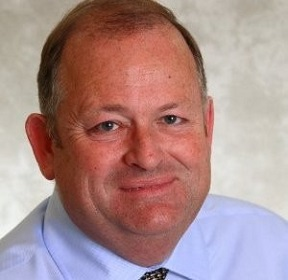
Chris Urch
United KingdomTitle: The discovery of new benzimidazole oomycete fungicides
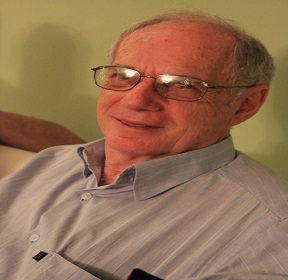
Martin Schmal
BrazilTitle: Synthesis of Vinyl acetate over Pd-Cu/ZrO2 nanostructured based catalysts

Huijun Zhao
AustraliaTitle: Unlocking Catalytic Powers of Nonprecious Nanomaterials
Biography: Huijun Zhao obtained his PhD in Chemistry (1994) from the University of Wollongong, Australia. He held Research Fellow/Senior Research Fellow positions during 1994-1997 in the University of Wollongong and University of Western Sydney. He took a Lecturer position at Griffith University in 1997 and was subsequently promoted to Senior Lecturer (2001), A/Professor (2003), Chair Professor of Griffith Commercialization Laboratory (2005). He currently holds a professorial position in School of Environment and Science and is the Direct of the Centre for Clean Environment and Energy at Griffith University. He is also the Director of the Centre for Environmental and Energy Nanomaterials at the Institute of Solid State Physics, Chinese Academy of Sciences. Prof. Zhao has won a number of awards such as The R.H. Stokes Medal and University Research Leadership Award, and is the Fellow of the Royal Society of Chemistry (FRSC) and the Fellow of the Royal Australian Chemical Institute (FRACI). He has expertise in energy and environmental nanomaterials, water source control and management system, field-based sensing technologies and aquatic environmental quality assessment. One of his current pursuits is to explore new means to unlock the catalytic powers of nonprecious materials as high performance catalysts for important catalysis reactions. Prof. Zhao has published over 400 refereed journal papers that attracted over 22,000 citations and earned him an H-index of 78. He has also gained 68 international patents within 8 world-wide patent families in functional nanomaterials & nanotechnology, photoelectrocatalysis and environmental monitoring systems.
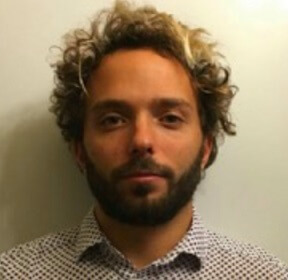
Christophe V Deraedt
FranceTitle: Use of dendrimers in homogeneous and heterogeneous catalysis
Biography: Christophe V. Deraedt received his master’s degree in nanoscience, life science, and chemistry in 2011 at the University of Bordeaux 1. He worked on the synthesis and uses of green nanoreactors (dendrimers and polymers) for catalysis of reactions including C−C bond formation and transformation, CuAAC “click” reactions, and hydrogenation chemistry for his Ph.D. with Prof. Didier Astruc. In 2016, he started a postdoctorate in the group of Prof. Gabor A. Somorjai on the heterogenization of homogeneous catalysts. His main work involved synthesis and use of metallic nanoparticles stabilized by dendrimers and supported on silica for C−C, C−H bond activation, and dehydrogenation reactions. After one year as a temporary researcher/teacher (ATER) at the University of Bordeaux in the group of Prof. Frederic Castet, in January 2019 he joined the group of Jean-Pierre Djukic at the University of Strasbourg as a CNRS researcher. His work is now focused on the C-H and Si-H activation.

Guangren Qian
ChinaTitle: Fabrication of catalyst from heavy metal-containing waste
Biography: Guangren Qian is currently the deputy director of Advanced Research Institute, Shanghai University. He is also a professor of School of Environmental & Chemical Engineering, Shanghai University; Director of Professional Committee of Shanghai Solid Waste Management, Shanghai; Deputy Director of Professional Committee of National Industrial Ecology, China. Prof. Qian’s research interesting included MSW solid waste Management and Hazardous Waste Management, Heavy metals bearing waste-derived environmental materials exploring and application, Biomass waste-derived biomass energy utilization and biochar utilization, Biogas utilization of MSW solid waste leachate by EGSB bioreactor and enhanced AOD purification of refractory organic substances. At present, Prof. Qian focused on the high-value added utilization of environmental waste and its direct conversion into energy and energy-conversion catalyst. In the field of his research interests, Prof. Qian has more than 160 publications, including 35 patents, 5 books/chapters, 120 original and review papers with >3,000 citations.

Guangren Qian
ChinaTitle: Fabrication of catalyst from heavy metal-containing waste
Biography: Guangren Qian is currently the deputy director of Advanced Research Institute, Shanghai University. He is also a professor of School of Environmental & Chemical Engineering, Shanghai University; Director of Professional Committee of Shanghai Solid Waste Management, Shanghai; Deputy Director of Professional Committee of National Industrial Ecology, China. Prof. Qian’s research interesting included MSW solid waste Management and Hazardous Waste Management, Heavy metals bearing waste-derived environmental materials exploring and application, Biomass waste-derived biomass energy utilization and biochar utilization, Biogas utilization of MSW solid waste leachate by EGSB bioreactor and enhanced AOD purification of refractory organic substances. At present, Prof. Qian focused on the high-value added utilization of environmental waste and its direct conversion into energy and energy-conversion catalyst. In the field of his research interests, Prof. Qian has more than 160 publications, including 35 patents, 5 books/chapters, 120 original and review papers with >3,000 citations.

Jia Zhang
ChinaTitle: Effective decomposition of greenhouse gas SF6 via heavy-metal solid waste derived catalyst
Biography: Jia Zhang is currently an Associated Professor in SHU Center of Green Urban Mining & Industry Ecology, School of Environmental and Chemical Engineering, Shanghai University. He also works in Shanghai Institute of Materials Genome. Dr Zhang’s research interest and expertise mainly focused on high-value-added utilization of hazardous solid waste. To this aim, he synthesized catalyst from heavy-metal containing waste, and applied it in various catalysis, including decomposition of greenhouse gas SF6, selective catalytic reduction of nitric oxide, catalytic oxidization of hydrogen sulfide, photocatalytic decomposition of organic waste and Fischer-Tropsch synthesis. Besides, he is working on CH4/H2S conversion to H2 from landfill gas by heavy-metal containing waste-derived catalyst at present. Dr Zhang has authored/co-authored >20 journal publications in the areas of high-value-added utilization of hazardous solid waste.

Ge Wang
ChinaTitle: Constructing of ultrathin 2D material for highly efficiency electrocatalysis
Biography: Two dimensional materials possess inherent advantages to improve electrocatalytic performance. First, two dimensional nanosheets have large surface–volume ratio, which can promote the adsorption of substrates and provide high specific surface area for electrocatalytic reactions. Moreover, the 2D nature of the nanosheets indicates short diffusion distance for electrons, which causes faster charge transfer rate and better turnover frequency. Therefore, Constructing of 2D ultrathin nanosheets is an effective strategy to achieve high electrocatalytic performance. Our group recently reported a series of 2D ultrathin materials: (1) Bimetal ultrathin metal-organic frameworks (MOFs) nanosheets were successfully prepared through a simple ultrasonic oscillation method. Due to the ultrathin feature, the surface metal atoms are highly coordinated unsaturated, which greatly benefit the adsorption process, thus offering outstanding performance. Besides, two kinds of metal atoms could generate the coupling pair, which could effectively promote the charge transfer.1 (2) On the basis of ultrathin nanosheets, novel 3D flower-like Ni2P were synthesized through the self-assembly of ultrathin Ni2P nanosheets, which retain the 2D structural advantages and offer faster electrons transfer compared with dispersed unassembled 2D nanosheets.2 (3) To further optimized the catalytic performance, 3D porous core-shell ultrathin nanosheets were prepared via a facile stepwise hydrothermal method. The ingenious architecture possess numerous channels for the diffusion of substrates, ideal pathway for electron transfer and larger area for adsorption compared with imporous nanosheets. Collectively, our constructing strategy provided a successful practice to prepare a series of high-efficient catalysts.
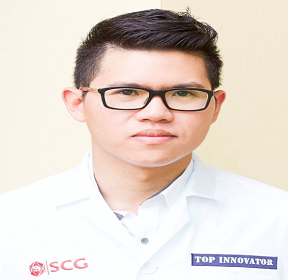
Kongkiat Suriye
ThailandTitle: Alternative green technology for reducing bromine index value of industrial benzene feedstock
Biography: Kongkiat Suriye obtained his BE degree (1st ranking in class) in Chemical Engineering from King Mongkut’s University of Technology, Thonburi, Thailand, and PhD degrees in Chemical Engineering from a joint programme between Chulalongkorn University, Thailand and University of California, Davis, USA. He has been working as a researcher in SCG Chemicals for almost 10 years. He has authored more than 37 international papers and one book chapter in fields of heterogeneous catalyst and catalytic process. He has also invented more than 20 international patents in these fields. One of his own developed technologies has been already commercially implemented. Two have been on the processes of implementation and licensing. Moreover, two of his newest technologies have been on the pilot plant proven stage.

Pawaphat Sartsri
ThailandTitle: Effect of temperature, pressure, and acidity of zirconia on catalytic cracking of methyl stearate via ketonic decarboxylation
Biography: Miss Pawaphat Sartsri was born on December 14, 1994, in Thailand. She received a bachelor’s degree in Engineering (Chemical Engineering) from King Mongkut’s Institute of Technology Ladkrabang in 2017. When she was an internship student, she got the great opportunity to intern relate to the petrochemicals industrial project innovation at Siam Cement Group (SCG) in Chemicals Business. Furthermore, she was especially interested in the field of catalysts and catalysis. So, she continued with her graduate studies in Chemical Engineering, Center of Excellence on Catalysis and Catalytic Reaction Engineering (CECC), Chulalongkorn University.

Pimchanok Nakchuai
ThailandTitle: Impact of alcohols as the H2 source for the selective photocatalytic hydrogenation of nitroaromatics to aminoaromatics
Biography: Miss Pimchanok Nakchuai was born on September 23, 1994, in Thailand. She received her bachelor’s degree in Engineering (Chemical Engineering) from King Mongkut’s Institute of Technology Ladkrabang in 2017. During she was an internship student, she got the great opportunity to intern relate to the petrochemicals industrial project innovation at Siam Cement Group (SCG) in Chemicals Business. She has mainly interested in the fields of nanomaterials for catalytic hydrogenation and photocatalysis. So, she currently continued with her graduate studies in Chemical Engineering at Center of Excellence on Catalysis and Catalytic Reaction Engineering (CECC), Chulalongkorn University.
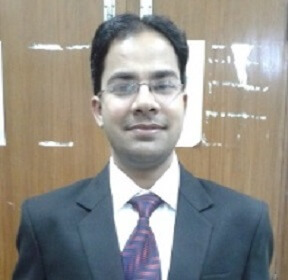
Ashish Bohre
National Institute of Chemistry SloveniaTitle: Synthesis of methacrylic acid from biomass derived itaconic acid over high surface area solid base catalysts
Biography: Dr. Ashish Bohre received his Ph.D. in 2012 from Dr. H. S. Gour Central University, India. Immediately after completing his Ph.D., he has joined Dr. Basudeb Saha’s research group in the department of chemistry, University of Delhi, as a post-doctoral fellow. Currently, he is working as a researcher at the Department of Catalysis and Chemical Reaction Engineering, National Institute of Chemistry, Ljubljana. The focuses of his research are catalytic conversion of lignocellulosic biomass into next-generation biofuels and fine chemicals.
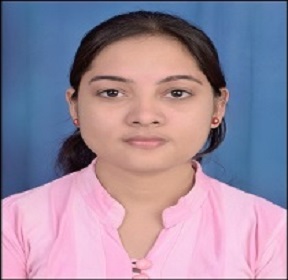
Kalpana Awasthi
National Institute of Chemistry, SloveniaTitle: Synthesis of Bio-based Styrene by The C-H Activation of Benzene over Palladium based Catalyst
Biography: Dr. Kalpana Avasthi received her Ph.D. in 2017 from Dr. H. S. Gour Central University, India. Immediately after completed the Ph.D. she has joined the research group of Prof Blaž Likozar at the Department of Catalysis and Chemical Reaction Engineering, National Institute of Chemistry (NIC), Ljubljana, Slovenia. The postdoctoral work of Dr. Avasthi at NIC is focused on developing a unique process involving catalysis to produce high-value chemicals, monomers, and fuels from biomass, with a special emphasis on preparation and characterization of a heterogeneous catalyst, reaction optimization, and understanding reaction mechanism. Dr. Avasthi is the author of over 12 papers, and 3 books, and 1 chapter. Among recent awards, Dr. Avasthi has received the Rajiv Gandhi National Fellowship Award from University Grant Commission, Government of India. She is also involved in peer review activities of many top-tiered journals of RSC, Elsevier, and Springer publications.

Jin An Wang
MexicoTitle: Rietveld refinement and catalytic properties of of nanosized WO3 and V2O5 dispersed on SBA?15 mesoporous solid
Biography: Dr. Jin An Wang is a full professor in Chemical Engineering in the National Polytechnic Institute in Mexico City, Mexico. He is a Mexican National Researcher and a member of Mexican Academy of Sciences. Dr. Wang is coauthor of more than 160 scientific publications and 5 patents and coeditor of 3 books in advanced new catalytic materials and 3 special volumes in Catalysis Today. He served as chair of the First to Fifth International Symposium on New Catalytic Materials. Dr. Wang was a visiting professor of the Universidad Nacional Autónoma de Mexico, Universidad Autónoma Metropolitana-A, and Worcester Polytechnic Institute in USA. His research interest focuses on the synthesis of new catalytic materials, catalysis for petroleum refining, catalysis for clean fuel production and environmental catalysis.
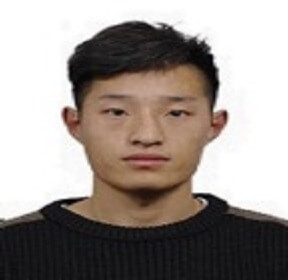
Xing Zhang
ChinaTitle: Alloying of gold with palladium: An effective strategy to improve the chlorine-resistant behavior and catalytic stability of 3DOM CeO2-supported catalysts in trichloroethylene combustion
Biography: Xing Zhang is a PhD student and working in Beijing university of technology in China. My major is applied chemistry and my doctoral supervisor Prof. Hongxing Dai is a Editor-in-Chief, Journal of Civil Engineering and Environmental Sciences, Co-Editor-in-Chief, The Global Environmental Engineers, Co-Editor-in-Chief, The Open Conference Proceedings Journal, Editor, Journal of Applied Chemistry, Head of Department of Chemistry and Chemical Engineering, Beijing Key Laboratory for Green Catalysis and Separation, Key Laboratory of Beijing on Regional Air Pollution Control, Laboratory of Catalysis Chemistry and Nanoscience, Department of Chemistry and Chemical Engineering, College of Environmental and Energy Engineering, Beijing University of Technology.
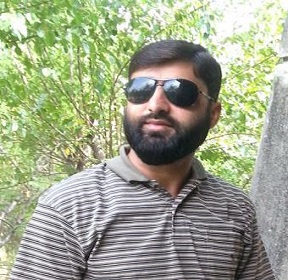
Muhammad Ajaml
PakistanTitle: Synthesis and characterization of stimuli-responsive microgel containing silver nanoparticles for sensing and catalytic applications
Biography: Dr. Muhammad Ajmal completed PhD in 2016. His area of research is synthesis of nanoparticles in novel polymer hydrogels and to investigate the catalytic, optical and adsorption properties of the as-prepared nanocomposites. Dr. Ajmal has published 20 research articles in international journals of impact factors. Currently, he is working as Assistant Professor of Physical Chemistry in Department of Chemistry University of Wah, Wah Cantt, Pakistan.

Michael B Hall
USATitle: Intriguing Aspects of Non-innocent Ligands in Transition-Metal Catalyst
Biography: Professor Hall obtained his B. S. degree in Chemistry from Juniata College. Following his Ph. D. work with Richard Fenske at the University of Wisconsin, Madison, he was awarded an AEI postdoctoral fellowship in theoretical chemistry at the University of Manchester, England, where he studied with Ian Hillier. Professor Hall’s career at Texas A&M University began in 1975 when he accepted an appointment as Assistant Professor of Chemistry. He was promoted to Associate Professor in 1980 and Professor in 1983. He served as Head of the Department from 1986 to 1994, and as Executive Associate Dean in the College of Science from 1997 to 2017. He founded and has directed the Laboratory of Molecular Simulation since 1997 and was named Davidson Professor of Science in 2004. His research interests are directed toward understanding chemical structures, reactions, and catalysis through state-of-the-art quantum calculations. Applications transition-metal activation of carbon-hydrogen and carbon-carbon bonds, and biocatalysis by metalloenzymes are among his current interests. He has served on the editorial advisory board of the Organometallics and Theoretical Chemistry Accounts; and on the Advisory Board of the Center for Molecular Electrocatalysis an EFRC center at Pacific Northwest National Laboratory.
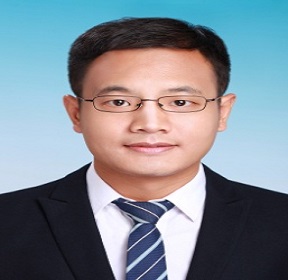
Yan Li
ChinaTitle: A keyhole plasma arc welding technology and its physical mechanism
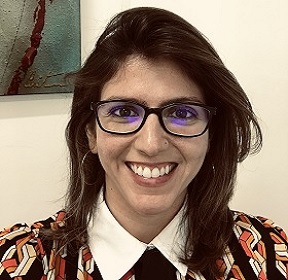
Diva da Silva Tavares
BrazilTitle: Attractively of volatile organic compounds from human skin odours to vectors of American tegumentary leishmaniasis

Huijun Zhao
AustraliaTitle: Design and Synthesis Nonprecious Catalysts for Energy Applications
Biography: Huijun Zhao obtained his PhD in Chemistry (1994) from the University of Wollongong, Australia. He held Research Fellow/Senior Research Fellow positions during 1994-1997 in the University of Wollongong and University of Western Sydney. He took a Lecturer position at Griffith University in 1997 and was subsequently promoted to Senior Lecturer (2001), A/Professor (2003), Chair Professor of Griffith Commercialization Laboratory (2005). He currently holds a professorial position in School of Environment and Science and is the Direct of the Centre for Clean Environment and Energy at Griffith University. He is also the Director of the Centre for Environmental and Energy Nanomaterials at the Institute of Solid State Physics, Chinese Academy of Sciences. Prof. Zhao has won a number of awards such as The R.H. Stokes Medal and University Research Leadership Award, and is the Fellow of the Royal Society of Chemistry (FRSC) and the Fellow of the Royal Australian Chemical Institute (FRACI). He has expertise in energy and environmental nanomaterials, water source control and management system, field-based sensing technologies and aquatic environmental quality assessment. One of his current pursuits is to explore new means to unlock the catalytic powers of nonprecious materials as high performance catalysts for important catalysis reactions. Prof. Zhao has published over 400 refereed journal papers that attracted over 22,000 citations and earned him an H-index of 78. He has also gained 68 international patents within 8 world-wide patent families in functional nanomaterials & nanotechnology, photoelectrocatalysis and environmental monitoring systems.

Ge Wang
ChinaTitle: Constructing of ultrathin 2D material for highly efficiency electrocatalysis
Biography: Two dimensional materials possess inherent advantages to improve electrocatalytic performance. First, two dimensional nanosheets have large surface–volume ratio, which can promote the adsorption of substrates and provide high specific surface area for electrocatalytic reactions. Moreover, the 2D nature of the nanosheets indicates short diffusion distance for electrons, which causes faster charge transfer rate and better turnover frequency. Therefore, Constructing of 2D ultrathin nanosheets is an effective strategy to achieve high electrocatalytic performance. Our group recently reported a series of 2D ultrathin materials: (1) Bimetal ultrathin metal-organic frameworks (MOFs) nanosheets were successfully prepared through a simple ultrasonic oscillation method. Due to the ultrathin feature, the surface metal atoms are highly coordinated unsaturated, which greatly benefit the adsorption process, thus offering outstanding performance. Besides, two kinds of metal atoms could generate the coupling pair, which could effectively promote the charge transfer.1 (2) On the basis of ultrathin nanosheets, novel 3D flower-like Ni2P were synthesized through the self-assembly of ultrathin Ni2P nanosheets, which retain the 2D structural advantages and offer faster electrons transfer compared with dispersed unassembled 2D nanosheets.2 (3) To further optimized the catalytic performance, 3D porous core-shell ultrathin nanosheets were prepared via a facile stepwise hydrothermal method. The ingenious architecture possess numerous channels for the diffusion of substrates, ideal pathway for electron transfer and larger area for adsorption compared with imporous nanosheets. Collectively, our constructing strategy provided a successful practice to prepare a series of high-efficient catalysts.

Christophe V Deraedt
FranceTitle: Use of dendrimers in homogeneous and heterogeneous catalysis
Biography: Christophe V. Deraedt received his master’s degree in nanoscience, life science, and chemistry in 2011 at the University of Bordeaux 1. He worked on the synthesis and uses of green nanoreactors (dendrimers and polymers) for catalysis of reactions including C−C bond formation and transformation, CuAAC “click” reactions, and hydrogenation chemistry for his Ph.D. with Prof. Didier Astruc. In 2016, he started a postdoctorate in the group of Prof. Gabor A. Somorjai on the heterogenization of homogeneous catalysts. His main work involved synthesis and use of metallic nanoparticles stabilized by dendrimers and supported on silica for C−C, C−H bond activation, and dehydrogenation reactions. After one year as a temporary researcher/teacher (ATER) at the University of Bordeaux in the group of Prof. Frederic Castet, in January 2019 he joined the group of Jean-Pierre Djukic at the University of Strasbourg as a CNRS researcher. His work is now focused on the C-H and Si-H activation.
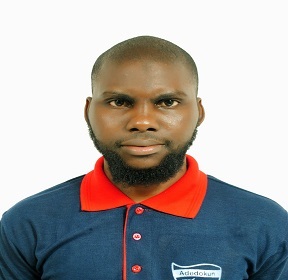
Ibraheem Olayiwola Bisiriyu
SouthafricaTitle: Adsorption of Cu (II) ions from aqueous solution using pyridine-2, 6-Dicarboxylic acid cross-linked chitosan as a green biopolymer Adsorbent.

Somboon Sukpancharoen
ThailandTitle: Multi-Objective Optimization (MOOP) of biodiesel production from waste cooking oil via Response Surface Methodology (RSM)

Guangren Qian
ChinaTitle: Fabrication of catalyst from heavy metal-containing waste
Biography: Guangren Qian is currently the deputy director of Advanced Research Institute, Shanghai University. He is also a professor of School of Environmental & Chemical Engineering, Shanghai University; Director of Professional Committee of Shanghai Solid Waste Management, Shanghai; Deputy Director of Professional Committee of National Industrial Ecology, China. Prof. Qian’s research interesting included MSW solid waste Management and Hazardous Waste Management, Heavy metals bearing waste-derived environmental materials exploring and application, Biomass waste-derived biomass energy utilization and biochar utilization, Biogas utilization of MSW solid waste leachate by EGSB bioreactor and enhanced AOD purification of refractory organic substances. At present, Prof. Qian focused on the high-value added utilization of environmental waste and its direct conversion into energy and energy-conversion catalyst. In the field of his research interests, Prof. Qian has more than 160 publications, including 35 patents, 5 books/chapters, 120 original and review papers with >3,000 citations.
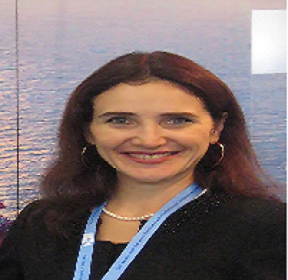
Christian Alberto Paternina Ortiz
ColombiaTitle: Influence of water salinity and hardness on the static adsorption of extended surfactants for enhanced oil recovery into the porous medium
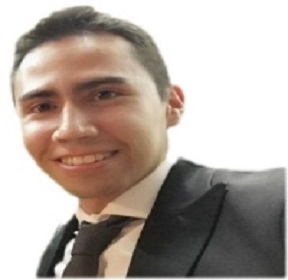
Jorge A. Delgado
SpainTitle: A general one-pot methodology for the preparation of mono and bimetallic nanoparticlessupported on carbon nanotubes: Application in the semi-hydrogenation of alkynes and acetylene
Biography: Jorge A. Delgado is a research scientist in the field of advanced materials and heterogenous catalysis. He was born in Bogotá, Colombia. In 2009, he completed his undergraduate studies in chemistry at the Universidad Nacional de Colombia and subsequently he moved to Tarragona, Spain to conduct postgraduate studies. In 2014, he concluded a PhD thesis on the field of the Fischer-Tropsch synthesis at the Universitat Rovira i Virgili under the supervision of Prof. Cyril Godard and Prof. Carmen Claver. During 2015 and 2017 he worked at the Centre Tecnologic de la Química (CTQ) in Tarragona, as a postdoctoral researcher in a project sponsored by Total S.A. focused on selective hydrogenation reactions. In 2017 and 2018 he developed activities of associated professor at the Universitat Rovira i Virgili and associate researcher at EURECAT. His research interests lie in the areas of nanoscience, advance materials, unconventional catalytic approaches, transformation of small molecules and technologies for sustainable applications.
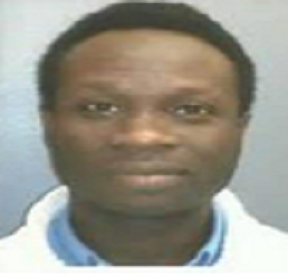
Title: Application of artificial intelligence in north-sea petroleum production enhancement and intervention
Biography: Dr. Lateef Akanji is a senior lecturer at the University of Aberdeen, UK since 2014. His research interests include fluid flow and transport in porous media, petroleum reservoir flow simulation and characterisation, subsurface production and enhanced oil recovery. He has authored and co-authored more than 20 technical papers and served as a peer reviewer for many prestigious journals. He holds a Ph.D. in Petroleum Engineering from Imperial College London UK. Lateef is a board member of Series Editorial Board for Springer Briefs in petroleum geoscience and engineering and editorial board member of Journal of Oil, Gas and Petrochemical Sciences. He is a chartered engineer, chartered petroleum engineer, fellow of higher education academy, EUR ING, and a member of the Energy Institute UK and the Society of Petroleum Engineers, SPE.

Jacob Adriaan Moulijn
NetherlandsTitle: Catalysis Engineering, a Multi-level Approach
Abstract:
Catalysis plays an important role in Chemical Process technology. It is the enabling technology for good chemical manufacturing processes. Catalysis as a discipline is not just a part of chemistry or physics but it also is an engineering discipline. Chemical and physical aspects are often scale-independent but in the engineering disciplines usually, the scale of the operation plays a role. In catalysis, both scale- independent and scale-dependent phenomena play a role. The reaction mechanism and structure of the active sites are usually scale-independent. Reactor design studies belong to the realm of chemical reaction engineering and are clearly dependent on the scale. In catalysis good contact between reactants and active sites is essential and the contact is, in general, scale-dependent. An integrated approach of catalysis research and development covering aspects of (bio) chemistry and physics and chemical reaction engineering, referred to as ‘Catalysis Engineering ‘, is rewarding. It is appropriate to distinguish three levels, the microlevel, focusing on molecules and catalytic sites, the mesolevel focusing on the catalyst particle and the reactor, and the macro level, considering the total process. This lecture focuses mainly on multiphase (G/L) systems.
On the microlevel, the scale-independent information is collected. Thermodynamics defines the possible window of operation and heats of reaction. Information on kinetics is crucial. On the mesolevel, fascinating developments are visible in the field of structuring the space. On the one hand, at the scale of the particle, optimal porosity (optimal hierarchal pore networks consisting of micro-, meso- and macropores) is important. On the other hand, structured reactors often outperform conventional reactors such as packed bed reactors. Pros of fixed bed reactors are high catalyst loading, convenience, low cost and often the possibility to use commercially available catalysts; cons are maldistribution, leading to non-uniform concentration profiles and even hot spots, internal diffusion limitations that might lead to reduced activity and selectivity. In a packed bed reactor hydrodynamics and mass transfer rates are coupled to particle shape and size. In a structured reactor, more degrees of freedom exist. For instance, dependent on the design, particle sizes can be chosen to be much smaller than those in packed beds. Structured reactors allow a high efficiency, based on a high mass transfer rate at relatively low energy dissipation. The low energy dissipation is related with the hydrodynamics regime: laminar rather than turbulent. In addition, in multiphase flow under most practical conditions, the flow pattern is that of segmented flow (called Taylor flow), resulting in large gas-liquid mass transport rates. Structured reactors have a large potential in Process Intensification. From a chemical engineering point of view, the intrinsic scalability of these reactors is intriguing.
It is not wise to carry out the research aimed at developing a good catalyst separately from the reactor design. It does not make sense to develop the best possible catalyst and to use it in an unsatisfactory reactor. Both the catalyst and the reactor should be optimal. In addition, it does not make sense to develop a catalyst and reactors without attention to the macro- level. In all stages of process development or improvement, the (conceptual) process design should play a role.
The benefits of a multi-level approach will be illustrated with practical examples.
Biography:
Jacob A. Moulijn is emeritus Professor of Chemical Engineering at the Delft University of Technology (19902007) and at the University of Amsterdam (1986-1990), visiting professor at several universities, including University of Delaware, USA, University of Gent, Belgium, National University of Singapore the University of Mumbai, India and Cardiff University, UK. During the nineties he was active in China for the UN-World Bank. He is active as consultant for several companies. He is the recipient of an Honorary Doctorate of the Åbo University, Finland and received several awards, including the BP Energy Price, and the NWO-STW ‘Simon Stevin Meesterschap’ award (2000). His research interests include: catalysis engineering, catalytic reactors, zeolitic membranes, kinetics, mass transfer, multiphase monolithic reactors, catalyst testing, petroleum conversion (Hydrotreatment, FCC, FischerTropsch), exhaust gas catalysis (soot from diesel engines, N2O removal, NO abatement, H2S removal, CFC conversion), selective hydrogenation, selective oxidation, photo- and electrocatalysis, catalyst synthesis by Atomic Layer Deposition (ALD), coal conversion (gasification, pyrolysis, combustion), and biomass conversion. He is (co-) author of over 750 technical papers, co-author of two books, editor of seven books, holder of several patents (reactor design, zeolitic membranes, catalyst development, biomass conversion).

Title: Optimization of Spent Caustic Wastewater Treatment of Jam Petrochemical Company by Wet Air Oxidation (WAO) method
Abstract:
Spent Caustic comes from a variety of sources. In these streams, sulfides and organic acids are removed from the production stream by transferring to the caustic phase. Hydrogen sulfide is consumed and the waste produced is usually a mixture of materials, which is referred to as the Spent Caustic Refinery. This wastewater cannot be recycled using conventional wastewater treatment methods, and methods such as burning, humidifying oxidation, wet oxidation by hydrogen peroxide and electrocoagulation or other specialized processes are used. In this study, the method of wet oxidation by air was used to purify this effluent in Jam Petrochemical Company. In order to optimize the purification, important factors influencing the purification efficiency were investigated, including factors such as temperature, pressure, time and pH. The design of optimization experiments was done by Design Express software. The optimization results showed that the temperature had the most effect on the removal efficiency, after which the pH and time had the most effect, respectively, and the effect of the pressure was not significant. Also, the parameters of pressure and time, time and pH had a significant interaction. In particular, the maximum removal rate (87%) was achieved for temperature of 250 ° C, 62 minutes, with pH 7 and 6 bar pressure.
Biography:
Soroush karamian is a researcher in the R&D department in Jam Petrochemical Company(JPC) in Iran. Our research field focused on catalysts and green technology. This paper is a result of an experiment for Treatment of Jam Petrochemical Company by Wet Air Oxidation (WAO) method.

Title: Optimization of Spent Caustic Wastewater Treatment of Jam Petrochemical Company by Wet Air Oxidation (WAO) method
Abstract:
Spent Caustic comes from a variety of sources. In these streams, sulfides and organic acids are removed from the production stream by transferring to the caustic phase. Hydrogen sulfide is consumed and the waste produced is usually a mixture of materials, which is referred to as the Spent Caustic Refinery. This wastewater cannot be recycled using conventional wastewater treatment methods, and methods such as burning, humidifying oxidation, wet oxidation by hydrogen peroxide and electrocoagulation or other specialized processes are used. In this study, the method of wet oxidation by air was used to purify this effluent in Jam Petrochemical Company. In order to optimize the purification, important factors influencing the purification efficiency were investigated, including factors such as temperature, pressure, time and pH. The design of optimization experiments was done by Design Express software. The optimization results showed that the temperature had the most effect on the removal efficiency, after which the pH and time had the most effect, respectively, and the effect of the pressure was not significant. Also, the parameters of pressure and time, time and pH had a significant interaction. In particular, the maximum removal rate (87%) was achieved for temperature of 250 ° C, 62 minutes, with pH 7 and 6 bar pressure.
Biography:
Soroush karamian is a researcher in the R&D department in Jam Petrochemical Company(JPC) in Iran. Our research field focused on catalysts and green technology. This paper is a result of an experiment for Treatment of Jam Petrochemical Company by Wet Air Oxidation (WAO) method.
E-Poster

Sahar Dehghani
Sahand University of Technology IranTitle: Ultrasound Assisted Dispersion of Magnesium Oxide on CeMCM-41 Nanocatalyst for Biodiesel Production from Waste Vegetable Oil
Abstract:
In this study, Mobil Composite Material No. 41 (MCM-41) used as the catalyst support for biodiesel production from waste cooking oil. Also, Si/Ce molar ratio of 10 introduced to the MCM-41 structure to prepare a modified bifunctional nanocatalyst with high stability and acidity. Then, ultrasound irradiation used to disperse MgO as active phase on the surface of as-fabricated support. The synthesized nanocatalysts were investigated using various techniques as follows: XRD, TEM, FESEM, and BET. The XRD patterns along with the results of BET analysis revealed the MCM-41 framework destruction while introducing Ce into the lattice. The particle size and size distribution of the nanocatalyst with Si/Ce=10 were subsequently determined by TEM and FESEM images. Biodiesel production carried out under following operational parameters to evaluate the catalytic performance of synthesized samples: T=70°C, catalyst loading=5 wt. %, methanol/oil molar ratio=9, and 6 h reaction time. Ce substitution in the support framework considerably enhanced the biodiesel conversion. The nanocatalyst with Si/Ce=10 demonstrated the extraordinary conversion of 94.3% compared to the nanocatalyst without Ce with 9.1% conversion. The reusability of the nanocatalyst with Si/Ce=10 studied during seven reaction cycles and biodiesel conversion reached to 88.7% at the end of the last cycle which demonstrates its significant stability.
Biography:
Sahar Dehghani is Ph.D. of Chemical engineering from Sahand University of Technology in May 2019. She got M.Sc. degree of Chemical engineering in the field of catalysis from the Razi University in Feb. 2012. Also, she got her B.Sc. degree in chemical engineering from Mohaghegh Ardabili in Feb. 2008. She had taught the lab course of “Chemistry (I)” at Sahand University of Technology for three terms. She has been working in the Reactor and Catalysis Research Center (RCRC) at Sahand University of Technology since 21 Sep. 2013 under supervision of Professor Mohammad Haghighi. Her research focuses on biodiesel production by heterogeneous catalysts in both M.Sc. and Ph.D.

Zahra Abdollahizadeh
Sahand University of Technology IranTitle: Photocatalytic Elimination of Antibiotic Ofloxacin over Plasmonic AgBr Anchored with Co-Cr Layered Double Hydroxide as Solar-Light-Driven Nanophotocatalyst
Abstract:
Currently, antibiotics, as non-biodegradable and emerging contaminants, are recognized as one of the most important environmental challenges. Photocatalysis process is an effective method for the degradation of resistant contaminants due to the low-cost and eco-friendly. In this study, the elimination of the antibiotic ofloxacin was investigated using the novel plasmonic AgBr anchored with Co-Cr layered double hydroxide (denoted as: AgBr-CoCrLDH-P) nanophotocatalyst with 3:1 weighted ratio under simulated sunlight, and to further evaluate, pure AgBr-P and CoCrLDH samples were synthesized and employed in the ofloxacin degradation. For 25 mg/L ofloxacin solution, the photocatalytic efficiency of CoCrLDH, AgBr-P and AgBr-CoCrLDH-P after 120 min irradiation was found 11.4%, 65% and 83.6%, respectively. XRD and FESEM analysis were used to characterize the photocatalysts. According to the results, the AgBr-CoCrLDH-P nanocomposite exhibited significantly enhanced photocatalytic performance due to a large specific area, low band gap and good charge separation.
Biography:
Zahra Abdollahizadeh is M.Sc. student in Chemical engineering and Catalysis at Sahand University of Technology. She received her undergraduate degree in Chemical engineering from Azad University of Tabriz. She has been working in the Reactor and Catalysis Research Center (RCRC) at Sahand University of Technology since July 2018. Her field is catalyst, and she is the top student of this field. She is interested in environmental projects and is working on the photocatalytic degradation of the antibiotic pollutant from wastewaters. Her supervisor is Professor Mohammad Haghighi who is one of the prominent figures of this field. Zahra will be graduated next month and as soon as she is going to start her doctoral program.
Speakers

Montserrat Gmez
FranceTitle: Metal-based nanoparticles in environmentally-friendly media: from design to synthesis
Biography: Montserrat Gómez received her PhD from the University of Barcelona (UB, 1991) in organometallic chemistry and homogeneous catalysis. She carried out a post-doc in I. Tkatckenko’s group (Toulouse, 1992) and sabbatical stays in P.W.N.M. van Leeuwen (Amsterdam, 1998) and B. Chaudret (Toulouse, 2002) teams. During 1993-2004, she was Lecturer in the UB working on chiral ligand design and enantioselective catalysis. Since 2005, she is full professor and group leader at the University of Toulouse 3-Paul Sabatier. Her current research work is focused on transition-metal catalyzed processes mainly using non-conventional solvents (ionic liquids, glycerol) and original supports (biochars, halloysites), covering polymetallic complexes and well-defined nanocatalysts for applications in synthesis.

Renal Backov
Massachusetts Institute of Technology USATitle: Inorganic, hybridized and living macrocellular foams:
Biography: Professor Rénal Backov obtained his Ph.D. in 1997 at the University of Montpellier II, France. After being an associate researcher at the University of Florida (Gainesville, USA), to address inorganic chemistry, he was hired as associated Professor at the University of Bordeaux (France) in 2001 while being full Professor since 2010. He has currently invited professor at the Massachusetts Institute of Technology (MIT, Cambridge USA). With more than 140 articles, 35 patents and 380 contributed papers, his field of research encompasses the domains of energy conversion (hydrogen storage, batteries, biofuel cells), drug delivery, sensors, heterogeneous catalysis (enzymatic, metallic, bacteriologic), photocatalysis, photonics, and beyond.

Anjali Uday Patel
IndiaTitle: Stabilized Heterogeneous Palladium Nanoparticles: Designing and Applications in some Aqueous Organic Transformations
Biography: Dr. Anjali Patel, Prof. of Inorganic Chemistry, after receiving her Ph.D. in 1992, pursued Post-Doctoral studies at Institut de la Recherch Sur la Catalyse, CNRS, Lyon, France during 1992-93 and currently is Head, Department of Chemistry, The Maharaja Sayajirao University of Baroda, Vadodara, Gujarat, INDIA. Her research interest focuses on Polyoxometalates, Heterogeneous Catalysis, Green Chemistry and Material Science. She has 117 papers in international journals including two review articles in Green Chemistry (RSC) and Catalysis Reviews Science and Engineering (Taylor and Francis), 3 patents, 5 book chapters and 2 books to her credit. She has visited various countries like USA, UK, China, France, Germany, Italy, Russia and Japan at various international conferences as invited speaker. Further, she has been awarded the prestigious Fellow of the Royal Society of Chemistry (FRSC) and a three year membership at the American Chemical Society (ACS).

Nguyen Ba Duc
VietnamTitle: Temperature dependence of the cumulants for CuAg72 and CuZn45 alloys in extended X-Ray absorption fine structure
Biography: Nguyen Ba Duc born and grew up in Thai Nguyen province and now is a lecturer in faculty of Physics in the University of Tan Trao in Tuyen Quang province, one of the province in the region north mountainous of Vietnam. He holds a doctor of Phylosophy of Physics and currently he is teaching some subjects of fields theoretical physics and computational physics. Duc has been involved many conferences of science in Association of Southeast Asian Nations and in the world. Recently, he has presented an abstract “The influence of confined phonons on Ettingshausen effects in Quantum well with parabolic potential in the presence of electromagnetic wave” at the 43rd National Conference on Theoretical Physics in Quy Nhon, Vietnam, August 2018.
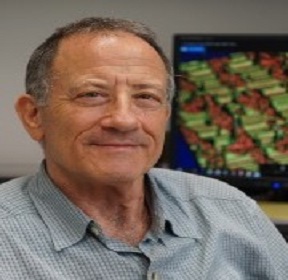
Micha Asscher
IsraelTitle: Reactivity of small hydrocarbons on Pd-Cu alloy nanoparticles supported on thin silica films
Biography: Prof. Asscher received his Ph.D. in Physical Chemistry at The Hebrew University of Jerusalem (HUJI) in Israel in 1981, then spent three years as a post-doc fellow in The University of California at Berkeley. He then joined the Faculty of The Institute of Chemistry at HUJI in 1984 and became a full professor in 1997. Prof. Asscher has been the Chair of the Institute of Chemistry between 2001-2004 and then a Vice Dean for research of the Faculty of Science at HUJI between 2005-2008. In 2004, Professor Asscher was nominated among "Scientific American Top 50" list of top research leaders for his innovative research on laser ablation induced surface patterning. Prof. Asscher's research interests today include model charging of objects in the interstellar space that behave as nano-capacitor, plasmonic-induced surface photochemistry, and ultra-high vacuum model heterogeneous catalysis studies.

Christophe Len
FranceTitle: Furfural, a valuable biobased platform
Abstract:
With an increasingly severe outlook for depleting oil-based resources, wood based biomass and especially plant waste rich in lignocellulosic feedstocks, appear to be the main alternative to produce many kinds of platform molecules such as furan derivatives. However, recent researches have shown that other kinds of carbohydrates as alginate derivatives could also be exploited as feedstocks for furfural production. As a molecule platform chemical, furfural permits to produce a large range of chemicals having different properties and utilities as solvents, plastics, fuel additives. Concerning the production of furfural, various homogeneous catalysts, solid acid catalysts and supported catalysts were explored in batch and in continuous flow by our group. Concerning the valorization route of furfural, the liquid phase catalytic hydrogenation was reported. Whereas molecular hydrogen is mostly used in industrial hydrogenation processes, recent studies also showed that alcohols can be used as reductants from which hydrides can be transferred catalytically to furfural. These two strategies: hydrogenation and transfer hydrogenation were developped in batch as well as in continuous flow for the production of value-added chemicals such as 2-methylfuran. Our works explore the catalytic behavior in batch and continuous flow of mono- and bimetallic metal catalysts (Cu, Pd, Pt, Ni) supported on various types of materials (microporous, mesoporous). Methodology, recycling, metal leaching will be discussed.
Biography:
Prof. Dr. Christophe Len received his Ph.D. in 1995 from the Université de Picardie Jules Verne followed by a post-doctoral fellow at the University of Hull (England). In 1997, he became assistant Professor at UPJV and was promoted to full Professor in 2004 at the Université de Poitiers (France). In 2010, he moved as full Professor at the Université de Technologie de Compiègne – UTC (France). In 2017, he developed his research in Chimie ParisTech (France). He has published more than 175 original publications and review articles, 8 book chapters and 9 patents. Among recent awards and recognition to his scientific career, he was promoted Honorary Professor of the University of Hull, England (2012-2018), Honorary Life Fellow of Indian Society of Chemists and Biologists (ISCB, 2014), Fellow of the Association of Carbohydrate Chemists and Technologist of India (ACCTI, 2015) and Fellow of the Royal Society of Chemistry (FRSC, 2015). In 2017, he has been honored with 2017 Glycerine Innovation Award sponsored by the American Cleaning Institute and the National Biodiesel Board. Moreover, He is member of different editorial board: Molecules, Catalysts, Scientific Reports (Nature). His current research explores organic chemistry and catalysis applied to biomass.

Montserrat Gmez
FranceTitle: Metal-based nanoparticles in environmentally-friendly media: from design to synthesis
Biography: Montserrat Gómez received her PhD from the University of Barcelona (UB, 1991) in organometallic chemistry and homogeneous catalysis. She carried out a post-doc in I. Tkatckenko’s group (Toulouse, 1992) and sabbatical stays in P.W.N.M. van Leeuwen (Amsterdam, 1998) and B. Chaudret (Toulouse, 2002) teams. During 1993-2004, she was Lecturer in the UB working on chiral ligand design and enantioselective catalysis. Since 2005, she is full professor and group leader at the University of Toulouse 3-Paul Sabatier. Her current research work is focused on transition-metal catalyzed processes mainly using non-conventional solvents (ionic liquids, glycerol) and original supports (biochars, halloysites), covering polymetallic complexes and well-defined nanocatalysts for applications in synthesis.

Anjali Uday Patel
IndiaTitle: Stabilized Heterogeneous Palladium Nanoparticles: Designing and Applications in some Aqueous Organic Transformations
Biography: Dr. Anjali Patel, Prof. of Inorganic Chemistry, after receiving her Ph.D. in 1992, pursued Post-Doctoral studies at Institut de la Recherch Sur la Catalyse, CNRS, Lyon, France during 1992-93 and currently is Head, Department of Chemistry, The Maharaja Sayajirao University of Baroda, Vadodara, Gujarat, INDIA. Her research interest focuses on Polyoxometalates, Heterogeneous Catalysis, Green Chemistry and Material Science. She has 117 papers in international journals including two review articles in Green Chemistry (RSC) and Catalysis Reviews Science and Engineering (Taylor and Francis), 3 patents, 5 book chapters and 2 books to her credit. She has visited various countries like USA, UK, China, France, Germany, Italy, Russia and Japan at various international conferences as invited speaker. Further, she has been awarded the prestigious Fellow of the Royal Society of Chemistry (FRSC) and a three year membership at the American Chemical Society (ACS).
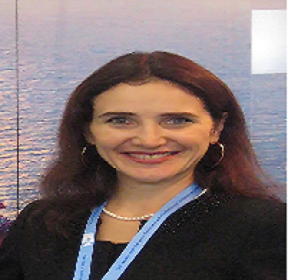
Olena Andrusenko
UkraineTitle: Global Modeling of Drill String Dragging and Buckling in 3D Curvilinear Bore-Holes
Biography: Olena Andrusenko is at the moment a senior lecturer at the Department of Mathematics of the National Transport University. She was born in Poltava region (Ukraine). She graduated from the Department of Differential Geometry of the Kharkov National University in 2003 and she obtained her PhD degree in 2014. Directions of her scientific activity are associated with the problems of mathematic simulation of drill-string deforming in hyper deep curvilinear bore-holes and analysis of their emergency states.

Ibraheem Olayiwola Bisiriyu
SouthafricaTitle: Adsorption of Cu (II) ions from aqueous solution using pyridine-2,6-Dicarboxylic acid cross-linked chitosan as a green biopolymer Adsorbent.
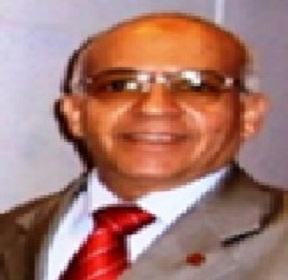
Mohamed A .K. Barakat
EgyptTitle: Mineralogical and geochemical studies of oil shale deposits in the cretaceous/paleogene succession at quseir area
Biography: Mohamed A .K. Barakat has completed his PhD from the College of Engineering and Applied sciences, University of Tulsa, Oklahoma, USA (in 1985). His Post-doctoral studies focused on the main sediment logical and geochemical characteristics of the oil fields in the Gulf of Suez, Egypt. In 1995, he is elected as an active member of the New York Academy of Sciences. He published more than 45 research papers and 39 unpublished scientific reports covering various fields of structural geology, groundwater, hydro- geochemistry and pollution studies. From 1997 to 2005, he acted as a Professor of Geology, Geochemistry, Hydrogeology and Head of the Drilling dept. of the Higher Institute for Water Affairs (Libya). From 2005 to present, he has been working as a Professor in Geology and Sedimentology in The Exploration Dept. EPRI. He participated as a Speaker in International Geological Conferences held in across the world (Japan, France, Dubai, Morocco, Libya, Lebanon, and USA). He is an active member in the following scientific societies: The Geological Society of Egypt, The American Association of Petroleum Geologists (AAPG), The Sedimentological Society of Egypt, The New York Academy of Sciences and The International Union of Geological Sciences, Kyoto, Japan.

Montserrat Gmez
FranceTitle: Metal-based nanoparticles in environmentally-friendly media: from design to synthesis
Biography: Montserrat Gómez received her PhD from the University of Barcelona (UB, 1991) in organometallic chemistry and homogeneous catalysis. She carried out a post-doc in I. Tkatckenko’s group (Toulouse, 1992) and sabbatical stays in P.W.N.M. van Leeuwen (Amsterdam, 1998) and B. Chaudret (Toulouse, 2002) teams. During 1993-2004, she was Lecturer in the UB working on chiral ligand design and enantioselective catalysis. Since 2005, she is full professor and group leader at the University of Toulouse 3-Paul Sabatier. Her current research work is focused on transition-metal catalyzed processes mainly using non-conventional solvents (ionic liquids, glycerol) and original supports (biochars, halloysites), covering polymetallic complexes and well-defined nanocatalysts for applications in synthesis.
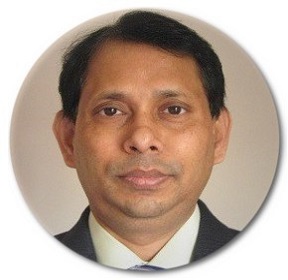
Moinuddin Sarker
USATitle: Hazardous waste plastics conversion into liquid hydrocarbon fuel
Biography: Dr. Sarker is the Owner of Waste Technologies LLC and working on Waste to Energy especially Waste Plastic to Fuel /Diesel, Waste Tires to Fuel and mixture of other Waste to converting in to Green Fuel. Dr. Sarker is the Owner of Sheba Green Technologies LLC and working on Turning any Waste to Green Fuel or Green Product as well as E-Waste. In addition, Dr. Sarker has 26 years of professional research experiences in different universities and research organizations all over the world including the US, Canada, the Netherlands, Germany, Taiwan, Bangladesh and the UK. He has 4 patents (Two Granted and 2 Pending) and 113 research publications to his credit in pier reviewed journals and conferences. Dr. Sarker is a distinguished member of 45 professional organizations. Dr. Sarker has written a chapter or Co-author of Chemistry, Emission Control, Radioactive Pollution and Indoor Air Quality which published by Intec, Open Access Publisher in Croatia.

Moinuddin Sarker
USATitle: Hazardous waste plastics conversion into liquid hydrocarbon fuel
Biography: Dr. Sarker is the Owner of Waste Technologies LLC and working on Waste to Energy especially Waste Plastic to Fuel /Diesel, Waste Tires to Fuel and mixture of other Waste to converting in to Green Fuel. Dr. Sarker is the Owner of Sheba Green Technologies LLC and working on Turning any Waste to Green Fuel or Green Product as well as E-Waste. In addition, Dr. Sarker has 26 years of professional research experiences in different universities and research organizations all over the world including the US, Canada, the Netherlands, Germany, Taiwan, Bangladesh and the UK. He has 4 patents (Two Granted and 2 Pending) and 113 research publications to his credit in pier reviewed journals and conferences. Dr. Sarker is a distinguished member of 45 professional organizations. Dr. Sarker has written a chapter or Co-author of Chemistry, Emission Control, Radioactive Pollution and Indoor Air Quality which published by Intec, Open Access Publisher in Croatia.

Anjali Uday Patel
IndiaTitle: Stabilized heterogeneous Palladium nanoparticles: Designing and applications in some aqueous organic transformations
Biography: Dr. Anjali Patel, Prof. of Inorganic Chemistry, after receiving her Ph.D. in 1992, pursued Post-Doctoral studies at Institut de la Recherch Sur la Catalyse, CNRS, Lyon, France during 1992-93 and currently is Head, Department of Chemistry, The Maharaja Sayajirao University of Baroda, Vadodara, Gujarat, INDIA. Her research interest focuses on Polyoxometalates, Heterogeneous Catalysis, Green Chemistry and Material Science. She has 117 papers in international journals including two review articles in Green Chemistry (RSC) and Catalysis Reviews Science and Engineering (Taylor and Francis), 3 patents, 5 book chapters and 2 books to her credit. She has visited various countries like USA, UK, China, France, Germany, Italy, Russia and Japan at various international conferences as invited speaker. Further, she has been awarded the prestigious Fellow of the Royal Society of Chemistry (FRSC) and a three year membership at the American Chemical Society (ACS).

Jia Zhang
ChinaTitle: Effective decomposition of greenhouse gas SF6 via heavy-metal solid waste derived catalyst
Biography: Jia Zhang is currently an Associated Professor in SHU Center of Green Urban Mining & Industry Ecology, School of Environmental and Chemical Engineering, Shanghai University. He also works in Shanghai Institute of Materials Genome. Dr Zhang’s research interest and expertise mainly focused on high-value-added utilization of hazardous solid waste. To this aim, he synthesized catalyst from heavy-metal containing waste, and applied it in various catalysis, including decomposition of greenhouse gas SF6, selective catalytic reduction of nitric oxide, catalytic oxidization of hydrogen sulfide, photocatalytic decomposition of organic waste and Fischer-Tropsch synthesis. Besides, he is working on CH4/H2S conversion to H2 from landfill gas by heavy-metal containing waste-derived catalyst at present. Dr Zhang has authored/co-authored >20 journal publications in the areas of high-value-added utilization of hazardous solid waste.

Pawaphat Sartsri
ThailandTitle: Effect of temperature, pressure, and acidity of zirconia on catalytic cracking of Methyl stearate via ketonic decarboxylation
Biography: Miss Pawaphat Sartsri was born on December 14, 1994, in Thailand. She received a bachelor’s degree in Engineering (Chemical Engineering) from King Mongkut’s Institute of Technology Ladkrabang in 2017. When she was an internship student, she got the great opportunity to intern relate to the petrochemicals industrial project innovation at Siam Cement Group (SCG) in Chemicals Business. Furthermore, she was especially interested in the field of catalysts and catalysis. So, she continued with her graduate studies in Chemical Engineering, Center of Excellence on Catalysis and Catalytic Reaction Engineering (CECC), Chulalongkorn University.

Title: Application of artificial intelligence in north-sea petroleum production enhancement and intervention
Biography: Dr. Lateef Akanji is a senior lecturer at the University of Aberdeen, UK since 2014. His research interests include fluid flow and transport in porous media, petroleum reservoir flow simulation and characterisation, subsurface production and enhanced oil recovery. He has authored and co-authored more than 20 technical papers and served as a peer reviewer for many prestigious journals. He holds a Ph.D. in Petroleum Engineering from Imperial College London UK. Lateef is a board member of Series Editorial Board for Springer Briefs in petroleum geoscience and engineering and editorial board member of Journal of Oil, Gas and Petrochemical Sciences. He is a chartered engineer, chartered petroleum engineer, fellow of higher education academy, EUR ING, and a member of the Energy Institute UK and the Society of Petroleum Engineers, SPE.

Pimchanok Nakchuai
ThailandTitle: Effect of silver on TiO2 support by reactive magnetron sputtering on the selective photocatalytic hydrogenation of 3-nitrostyrene to 3-vinylaniline
Biography: Miss Pimchanok Nakchuai was born on September 23, 1994, in Thailand. She received her bachelor’s degree in Engineering (Chemical Engineering) from King Mongkut’s Institute of Technology Ladkrabang in 2017. During she was an internship student, she got the great opportunity to intern relate to the petrochemicals industrial project innovation at Siam Cement Group (SCG) in Chemicals Business. She has mainly interested in the fields of nanomaterials for catalytic hydrogenation and photocatalysis. So, she currently continued with her graduate studies in Chemical Engineering at Center of Excellence on Catalysis and Catalytic Reaction Engineering (CECC), Chulalongkorn University.

Olena Andrusenko
UkraineTitle: Global modeling of drill string dragging and buckling in 3D curvilinear bore-holes 14
Biography: Olena Andrusenko is at the moment a senior lecturer at the Department of Mathematics of the National Transport University. She was born in Poltava region (Ukraine). She graduated from the Department of Differential Geometry of the Kharkov National University in 2003 and she obtained her PhD degree in 2014. Directions of her scientific activity are associated with the problems of mathematic simulation of drill-string deforming in hyper deep curvilinear bore-holes and analysis of their emergency states.
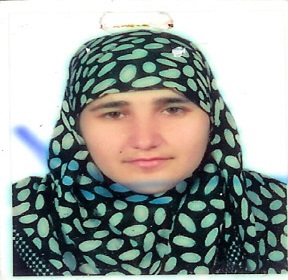
Sumaira Shah
PakistanTitle: Comparative study of silver and gold nanoparticles of Viscum album and its antimicrobial Activity
Biography: Dr. Sumaira Shah is working as a regular lecturer at department of botany at Bacha Khan University Charsadda, Pakistan from 2014 till now. She holds her Master degree in Botany in, 2010, M. Phil in 2012 and Ph.D. in 2016 from the University of Peshawar, Pakistan in Nano biotechnology. She has a teaching experience of 5 years in university level. Dr. Sumaira Shah visit to Brown University USA for her research work during Ph.D. Dr. Sumaira Shah participates in various national and international conferences and presents her work. She has been published her work in various international journals. She is fascinated with teaching and research.

Kongkiat Suriye
ThailandTitle: Alternative green technology for reducing bromine index value of industrial benzene feedstock
Biography: Kongkiat Suriye obtained his BE degree (1st ranking in class) in Chemical Engineering from King Mongkut’s University of Technology, Thonburi, Thailand, and PhD degrees in Chemical Engineering from a joint programme between Chulalongkorn University, Thailand and University of California, Davis, USA. He has been working as a researcher in SCG Chemicals for almost 10 years. He has authored more than 37 international papers and one book chapter in fields of heterogeneous catalyst and catalytic process. He has also invented more than 20 international patents in these fields. One of his own developed technologies has been already commercially implemented. Two have been on the processes of implementation and licensing. Moreover, two of his newest technologies have been on the pilot plant proven stage.
Keynote Forum

Jacob Adriaan Moulijn
NetherlandsTitle: Catalysis Engineering, a Multi-level Approach
Abstract:
Catalysis plays an important role in Chemical Process technology. It is the enabling technology for good chemical manufacturing processes. Catalysis as a discipline is not just a part of chemistry or physics but it also is an engineering discipline. Chemical and physical aspects are often scale-independent but in the engineering disciplines usually, the scale of the operation plays a role. In catalysis, both scale- independent and scale-dependent phenomena play a role. The reaction mechanism and structure of the active sites are usually scale-independent. Reactor design studies belong to the realm of chemical reaction engineering and are clearly dependent on the scale. In catalysis good contact between reactants and active sites is essential and the contact is, in general, scale-dependent. An integrated approach of catalysis research and development covering aspects of (bio) chemistry and physics and chemical reaction engineering, referred to as ‘Catalysis Engineering ‘, is rewarding. It is appropriate to distinguish three levels, the microlevel, focusing on molecules and catalytic sites, the mesolevel focusing on the catalyst particle and the reactor, and the macro level, considering the total process. This lecture focuses mainly on multiphase (G/L) systems.
On the microlevel, the scale-independent information is collected. Thermodynamics defines the possible window of operation and heats of reaction. Information on kinetics is crucial. On the mesolevel, fascinating developments are visible in the field of structuring the space. On the one hand, at the scale of the particle, optimal porosity (optimal hierarchal pore networks consisting of micro-, meso- and macropores) is important. On the other hand, structured reactors often outperform conventional reactors such as packed bed reactors. Pros of fixed bed reactors are high catalyst loading, convenience, low cost and often the possibility to use commercially available catalysts; cons are maldistribution, leading to non-uniform concentration profiles and even hot spots, internal diffusion limitations that might lead to reduced activity and selectivity. In a packed bed reactor hydrodynamics and mass transfer rates are coupled to particle shape and size. In a structured reactor, more degrees of freedom exist. For instance, dependent on the design, particle sizes can be chosen to be much smaller than those in packed beds. Structured reactors allow a high efficiency, based on a high mass transfer rate at relatively low energy dissipation. The low energy dissipation is related with the hydrodynamics regime: laminar rather than turbulent. In addition, in multiphase flow under most practical conditions, the flow pattern is that of segmented flow (called Taylor flow), resulting in large gas-liquid mass transport rates. Structured reactors have a large potential in Process Intensification. From a chemical engineering point of view, the intrinsic scalability of these reactors is intriguing.
It is not wise to carry out the research aimed at developing a good catalyst separately from the reactor design. It does not make sense to develop the best possible catalyst and to use it in an unsatisfactory reactor. Both the catalyst and the reactor should be optimal. In addition, it does not make sense to develop a catalyst and reactors without attention to the macro- level. In all stages of process development or improvement, the (conceptual) process design should play a role.
The benefits of a multi-level approach will be illustrated with practical examples.
Biography:
Jacob A. Moulijn is emeritus Professor of Chemical Engineering at the Delft University of Technology (19902007) and at the University of Amsterdam (1986-1990), visiting professor at several universities, including University of Delaware, USA, University of Gent, Belgium, National University of Singapore the University of Mumbai, India and Cardiff University, UK. During the nineties he was active in China for the UN-World Bank. He is active as consultant for several companies. He is the recipient of an Honorary Doctorate of the Åbo University, Finland and received several awards, including the BP Energy Price, and the NWO-STW ‘Simon Stevin Meesterschap’ award (2000). His research interests include: catalysis engineering, catalytic reactors, zeolitic membranes, kinetics, mass transfer, multiphase monolithic reactors, catalyst testing, petroleum conversion (Hydrotreatment, FCC, FischerTropsch), exhaust gas catalysis (soot from diesel engines, N2O removal, NO abatement, H2S removal, CFC conversion), selective hydrogenation, selective oxidation, photo- and electrocatalysis, catalyst synthesis by Atomic Layer Deposition (ALD), coal conversion (gasification, pyrolysis, combustion), and biomass conversion. He is (co-) author of over 750 technical papers, co-author of two books, editor of seven books, holder of several patents (reactor design, zeolitic membranes, catalyst development, biomass conversion).

Dan Meyerstein
IsraelTitle: The roles of HCO3-/CO¬32- in catalytic oxidation processes
Abstract:
The fact that the redox potential of the couple CO3.-/CO32-, 1.57 V, is considerably lower than that of the OH./H2O suggests that in many catalytic oxidation processes carbonate might be involved. Indeed results point out that the Fenton reaction in the presence of HCO3- proceeds via:
Fe(H2O)62+ + HCO3- ⇌
FeII(CO3)(H2O)3 + H3O+ + 2H2O
FeII(CO3)(H2O)3 + OOH- ⇌
(CO3)FeII(OOH)(H2O)2- + H2O
(CO3)FeII(OOH)(H2O)2- ®
(CO3)FeIV(OH)3(H2O)-
(CO3)FeIV(OH)3(H2O)- ®
FeIII(OH)3(H2O) + CO3.-
i.e. the active ROS in physiological media and in advanced oxidation processes is CO3.- and not OH..
Furthermore DFT calculations suggest that CO3.- is expected as the active species in photo-catalytic oxidation processes.
The observation that CuII(CO3)n(2n-2)-, CoII(CO3)n(2n-2)-and NiIIL2+ in the presence of bicarbonate are good electro-catalysts for water oxidation is due to:
- The carbonate ligand lowers considerably the redox potential of the central cation.
- The carbonate ligand is a non-innocent ligand, i.e. a considerable charge transfer from the central cation to the carbonate occurs. This charge transfer is involved in the water oxidation.
Acknowledgement: This study was supported by a grant from the Pazy Foundation.
Biography:
Dan Meyerstein is a Professor of Chemistry at Ariel University and Professor Emeritus at Ben-Gurion University in Israel. He Received his Ph.D. in 1965. He has over 350 papers. He was president of Ariel University and President of the Israel Chemical Society.

Marta I Litter
ArgentinaTitle: Current state of the art on green synthesis of iron-based nanoparticles. Case study: Iron nanoparticles from Argentine yerba mate and green tea extracts useful for removal of pollutants in soil and water
Abstract:
A revision on the literature on green synthesis of iron-based nanoparticles and their application as nanotechnology for removal of pollutants from soil and water will be presented, highlighting the uncertainties about their chemical identity and efficiency for removal of pollutants. In addition, the need of further improvement in order to obtain stable nanoparticles of controlled size and morphology, conducive to large-scale synthesis of iron nanoparticles for environmental remediation and hazardous waste treatment applications will be stressed. As a study case, the preparation of iron-based nanoparticles synthesized from iron salts and water extracts (polyphenols) of powdered yerba mate (Ilex Paraguariensis Saint Hilaire) will be described. Yerba mate is highly consumed as an autochthonous tea in Paraguay, Uruguay, Brazil and Argentina. The nanomaterials have been completely characterized by XRD, Raman and Mossbauer spectroscopies and their applicability for Cr (VI) and As (III)/As (V) removal from polluted waters have been tested in laboratory tests with synthetic and real waters from Argentina and compared with other tea extracts such as green tea and commercial iron nanoparticles. The nanomaterials are low-cost, nontoxic and can be easily produced at large scale. They can be used for removal of other pollutants (e.g., mercury, uranium, lead, nitrate, halogenated hydrocarbons, pesticides such as 2, 4-D, etc.).
Biography:
Prof. Litter has a Ph.D. in Chemistry (Buenos Aires University, Argentina), with postdoctoral studies at the University of Arizona, USA. She was head of the Division of Environmental Chemistry Remediation (National Atomic Commission of Argentina), Senior Researcher of the National Research Council and Full Professor at the University of General San Martín. She has more than 200 scientific publications in international journals, books, and book chapters. She received the Mercosur Prize in Science and Technology (2006 and 2011) and was President of the International Congress on Arsenic in the Environment (2014). She was designated pioneer on photocatalysis in Argentina (2016).

Christophe Len
FranceTitle: Furfural, a valuable biobased platform
Abstract:
With an increasingly severe outlook for depleting oil-based resources, wood based biomass and especially plant waste rich in lignocellulosic feedstocks, appear to be the main alternative to produce many kinds of platform molecules such as furan derivatives. However, recent researches have shown that other kinds of carbohydrates as alginate derivatives could also be exploited as feedstocks for furfural production. As a molecule platform chemical, furfural permits to produce a large range of chemicals having different properties and utilities as solvents, plastics, fuel additives. Concerning the production of furfural, various homogeneous catalysts, solid acid catalysts and supported catalysts were explored in batch and in continuous flow by our group. Concerning the valorization route of furfural, the liquid phase catalytic hydrogenation was reported. Whereas molecular hydrogen is mostly used in industrial hydrogenation processes, recent studies also showed that alcohols can be used as reductants from which hydrides can be transferred catalytically to furfural. These two strategies: hydrogenation and transfer hydrogenation were developped in batch as well as in continuous flow for the production of value-added chemicals such as 2-methylfuran. Our works explore the catalytic behavior in batch and continuous flow of mono- and bimetallic metal catalysts (Cu, Pd, Pt, Ni) supported on various types of materials (microporous, mesoporous). Methodology, recycling, metal leaching will be discussed.
Biography:
Prof. Dr. Christophe Len received his Ph.D. in 1995 from the Université de Picardie Jules Verne followed by a post-doctoral fellow at the University of Hull (England). In 1997, he became assistant Professor at UPJV and was promoted to full Professor in 2004 at the Université de Poitiers (France). In 2010, he moved as full Professor at the Université de Technologie de Compiègne – UTC (France). In 2017, he developed his research in Chimie ParisTech (France). He has published more than 175 original publications and review articles, 8 book chapters and 9 patents. Among recent awards and recognition to his scientific career, he was promoted Honorary Professor of the University of Hull, England (2012-2018), Honorary Life Fellow of Indian Society of Chemists and Biologists (ISCB, 2014), Fellow of the Association of Carbohydrate Chemists and Technologist of India (ACCTI, 2015) and Fellow of the Royal Society of Chemistry (FRSC, 2015). In 2017, he has been honored with 2017 Glycerine Innovation Award sponsored by the American Cleaning Institute and the National Biodiesel Board. Moreover, He is member of different editorial board: Molecules, Catalysts, Scientific Reports (Nature). His current research explores organic chemistry and catalysis applied to biomass.
Speakers

Faraz Ahmad
ChinaTitle: Application of Na3PO4/NaX catalyst for the side chain alkylation reaction of toluene with methanol
Abstract:
Styrene is a basic organic chemical raw material for synthetic rubber and plastics. At present, there are many ways to synthesize styrene in industry, but most of them are catalytic dehydrogenation of ethylbenzene. This process has many shortcomings such as long process and high energy consumption, which are not in line with the current concept of environmental protection and energy saving. The side-chain alkylation of toluene with methanol has many advantages, such as wide source of raw materials, short process flow, low energy consumption. Therefore, this reaction has become the focus of research.
A large number of studies have found that side-chain alkylation of toluene with methanol is a synergistic reaction on acid and base catalyst, and the catalyst needs to have suitable weak acid sites and base sites at the same time. In our recent research we found that moderate addition of cheaper Na3PO4 decreased the amount of middle acid and increased the strength and amount of middle base sites. Based on the unique role of Na3PO4 in regulating acidity and basicity, catalysts with different acidity and basicity were prepared in this paper and the relationship between the catalytic performance and the distribution of acid and base sites were investigated. The catalysts were characterized by XRD, SEM, FT-IR, BET, UV-Vis, NH3-TPD and CO2-TPD. It is found that the catalysts prepared by ion-exchange of Na3PO4 solution with NaX zeolite, the distribution of the acid-base sites changes with the concentration of Na3PO4 solution. While the catalyst prepared by a modified method which cannot be opened at present has a better performance for the side chain alkylation of toluene with methanol. The reason is that Na3PO4 and NaX can provide a suitable base site, a weak acid site respectively and they both form a suitable space structure required for the reaction. The reaction of toluene and methanol were very sensitive to the basicity and acidity of the catalyst, there were some competitive activations for toluene and methanol over middle acid and middle base sites. In the absence of strong acid sites on the catalyst, when the more middle base sites and the less middle acid sites there were on the surface of the catalyst, the more products of side-chain alkylation of toluene formed. If the middle base sites were enough, the stronger base sites there were on the surface of the catalyst, the more formaldehyde formed, so, the selectivity of styrene should be higher. That is, enough middle and strong base sites were both very important for the side-chain alkylation of toluene with methanol to styrene.
Biography:
Faraz Ahmad is currently doing MS in Chemical Engineering from the School of Chemistry and Chemical Engineering, Taiyuan University of Technology, Taiyuan, Shanxi, Peoples Republic of China. Faraz is working as a research assistant in the Key Laboratory of Coal Science and Technology of Ministry of Education and Shanxi Province. His research topic is “Production of styrene and ethylbenzene by side-chain alkylation of toluene with methanol”. Specifically, his expertise is in the following area: catalyst preparation, characterization of catalysts. Previously in his BS, he has done a research project entitled “Production of Methanol from Coal”. Apart from an educational career he has two years of teaching experience in a reputable HEC recognized University in Pakistan.

Jozsef Kupai
HungaryTitle: Synthesis and Application of Membrane-Grafted and Cyclodextrin Anchored Asymmetric Cinchona-Based Organocatalysts
Abstract:
In this work we continued our research in the field of application of organocatalysts in continuous mode performed in sustainable way.1 In the first part of this research, we introduce a sustainable membrane-based synthesis–separation platform for enantioselective organocatalysis. An azido derivatized cinchona-squaramide bifunctional catalyst was synthesized and subsequently grafted to the surface of a polybenzimidazole-based nanofiltration membrane. The favorable effect of the covalent grafting—due to the change in geometry and increased secondary interactions—on the catalytic activity due to conformational changes was confirmed by quantum chemical calculations. Asymmetric Michael and aza-Michael reactions of 1,3-dicarbonyl and indole, pyrazole, and triazole derivatives to β-nitrostyrene were performed with as high as 99% enantiomeric excess. This report on the enantioselective aza-Michael reaction of pyrazoles and triazoles opens new frontiers in the application of squaramide-based cinchona catalysts. A catalytic membrane cascade reactor was developed for an integrated synthesis–purification process allowing at least 98% product and substrate recovery, and quantitative in situ solvent recycling. The sustainability of the synthetic methodology was assessed through E-factor and carbon footprint.
In the next part, cinchona-thiourea and -squaramide catalysts were covalently anchored to inherently large, stable and well-defined permethyl-β-cyclodextrins, as well. These catalysts were used in batch and continuous mode with excellent enantioselectivity.
This research was funded by the New National Excellence Program of the Ministry of Human Capacities, grant number ÚNKP-19-4-BME-415, and the Janos Bolyai Research Scholarship of the Hungarian Academy of Science. It was also supported by the National Research, Development and Innovation Office (former OTKA, grant number K128473).
Biography:
Jozsef Kupai works as an assistant professor at Budapest University of Technology and Economics Hungary, he delivers organic chemistry lectures and practices. He is the head of the Organocatalysis Research Group at the Department of Organic Chemistry and Technology. The expertise of the Kupai group (www.kupaigroup.com) members centers on the synthesis, application, and recovery of cinchona based organocatalysts. Dr. Kupai collaborates with Dr. Gyorgy Szekely at the University of Manchester. The Szekely Group is responsible for the process design encompassing flow reactors coupled with membrane purification.

Title: Optimization of Spent Caustic Wastewater Treatment of Jam Petrochemical Company by Wet Air Oxidation (WAO) method
Abstract:
Spent Caustic comes from a variety of sources. In these streams, sulfides and organic acids are removed from the production stream by transferring to the caustic phase. Hydrogen sulfide is consumed and the waste produced is usually a mixture of materials, which is referred to as the Spent Caustic Refinery. This wastewater cannot be recycled using conventional wastewater treatment methods, and methods such as burning, humidifying oxidation, wet oxidation by hydrogen peroxide and electrocoagulation or other specialized processes are used. In this study, the method of wet oxidation by air was used to purify this effluent in Jam Petrochemical Company. In order to optimize the purification, important factors influencing the purification efficiency were investigated, including factors such as temperature, pressure, time and pH. The design of optimization experiments was done by Design Express software. The optimization results showed that the temperature had the most effect on the removal efficiency, after which the pH and time had the most effect, respectively, and the effect of the pressure was not significant. Also, the parameters of pressure and time, time and pH had a significant interaction. In particular, the maximum removal rate (87%) was achieved for temperature of 250 ° C, 62 minutes, with pH 7 and 6 bar pressure.
Biography:
Soroush karamian is a researcher in the R&D department in Jam Petrochemical Company(JPC) in Iran. Our research field focused on catalysts and green technology. This paper is a result of an experiment for Treatment of Jam Petrochemical Company by Wet Air Oxidation (WAO) method.

Hossein Zeinalzadeh
Sahand University of Technology IranTitle: Structural and morphological improvement of silica-alumina-phosphate nanostructure by hard template addition applied in green fuel production
Abstract:
The increases in the consumption of fossil fuels and environmental pollution caused by these fuels have been prompted researchers to produce renewable biodiesel fuels. Due to the high cost of biodiesel production, suitable catalyst design is highly efficient to increase efficiency and reduce biodiesel production time. The main objective of this research is to synthesize of Silica-Alumina-Phosphate nanostructure by hydrothermal method and to improve its structure in order to produce biodiesel by esterification reactions of free fatty acid. The fatty acid contained in the oil does not penetrate the Ce/SAPO-34 pores because of its large molecular size. To solve the penetration problem, the texture of the Ce/SAPO-34 was modified by the use of activated charcoal, and therefore meso and macro pores were formed in its structure. 4 wt.% of activated charcoal was determined to achieve a catalyst containing more meso and macro pores. Synthesized catalysts were evaluated by XRD, FESEM, BET/BJH analysis. The BET analysis showed that 4 wt.% of activated charcoal is the optimal amount of the hard template. The results of the reactor test showed that the synthesized nanocatalyst has the ability to convert 94% of the free fatty acid into biodiesel. The synthesized catalyst resulted in a conversion rate of 83% after 5 times of recovery, still maintaining its crystallinity.
Biography:
Hossein Zainalzadeh is a Bachelor of Science degree student in Chemical Engineering at Sahand University of Technology and will complete his undergraduate degree on September 30, 2019. He was a member of the Nanotechnology and Science Committee for one year and teaching assistant (TA) in the "Fluid Mechanics" course for two semesters from October 1, 2018 to June 17, 2019. During his education, Hossein was one of the two undergraduate students who could enter the research centers as a research assistant (RA). Hossein has been working as a researcher under the supervision of Professor Mohammad Haghighi for three years. His research areas of interest are CO Oxidation, Hydrogen and Biodiesel production, designing and synthesis of nanostructure catalysts. Hossein’s B.Sc thesis focused on the biodiesel production over SAPO-34. Last summer, Hossein worked as an intern at Khoy Combined Cycle Power Plant. Presently he is planning to study M.Sc. in the related fields.
Poster

Pter Kisszkelyi
HungaryTitle: Size-enlargement enhanced catalytic methodology for sustainable synthesis
Abstract:
Among organic transformations, catalyst assisted reactions are the most commonly performed processes. While in case of heterogeneous catalysts they are unambiguous, for homogeneous systems the laborious product purification and recycling of the high value catalysts still call for the design of more flexible and sustainable strategies. The membrane assisted recovery of homogeneous catalysts is feasible with low energy consumption, and its scale-up and implementation in continuous and hybrid processing are relatively straightforward. Still, the efficiency of catalyst separation depends on the absolute catalyst retention by the membrane and on the molecular weight gap between the catalyst and the other components (starting materials, product, side-product). Thus, the size-enlargement of the catalyst is usually required to achieve efficient retention and to avoid catalyst leaching in the membrane separation. This work presents nanofiltration enabled catalyst recycling methodology where the size-enlargement of the catalyst is achieved through covalent anchoring. Cinchona alkaloid based hydrogen bond donor organocatalysts (thiourea and squaramide) were attached to permethyl-β-cyclodextrin and applied in Michael reaction. For the asymmetric addition both alternative and conventional solvents were screened (up to 99% ee), and the enantioselectivities were correlated with the Kamlet-Taft parameters of the solvents. Continuous organocatalysis was performed in a coiled tube flow reactor connected to a membrane filtration unit (80 g L−1 h−1), allowing complete recovery of the catalyst and 50% solvent recycling. Further development of this catalysis-separation methodology could broaden the alternatives and facilitate the efficient production of enantiopure chemicals. The size-enlarged catalyst recovery procedure has the potential to be successfully applied in other catalytic fields as well, like electro-, or photocatalysis.
Biography:
Péter Kisszékelyi is a fourth year PhD student at the George Oláh Doctoral School, Budapest University of Technology and Economics, Hungary. He works under the supervision of Dr. József Kupai in the Organocatalysis Research Group (www.kupaigroup.com) at the Department of Organic Chemistry and Technology. His research focuses on cinchona-based recyclable organocatalyst design and other sustainable catalytic methodologies.

Sndor Nagy
HungaryTitle: Immobilization of cinchona squaramide organocatalysts on poly(glycidylmethacrylate) and their application
Abstract:
Owing to their successful application in asymmetric reactions, cinchona-based organocatalysts are widespread in the field of homogenous organocatalysis. They are applied in asymmetric reactions such as Michael addition, Morita–Baylis–Hillman and Diels–Alder reactions with high yields and enantiomeric excesses. Since the recovery of homogeneous catalysts is essential for their economical application, immobilization on polymer support promises a solution for reusing them. Herein this work presents the preparation of a polymer carrier and, the synthesis and application of immobilized cinchona squaramides. Non-immobilized cinchona squaramides were tested in seven different solvents with excellent yields (up to 99%) and enantiomeric excesses (up to 91%),1 therefore this catalyst was chosen to immobilize on a carrier. As polymer support, poly(glycidyl methacrylate) (PGMA) microspheres were prepared by radical dispersion polymerization. As a result, polymer particles were obtained with narrow size-distribution (~1 m) furthermore, their resistance to solvents and mechanical damage was increased by subsequent cross-linking. By taking advantages of reactive epoxy-groups, cinchona squaramide was immobilized on PGMA via linker containing primer amino groups, which readily reacts with epoxides. Two PGMA immobilized catalysts were prepared (see Figure 1): in one, cinchona squaramide was immobilized so the linker connects at quinoline (left) while, in the other it connects at quinuclidine group (right). After their activity was compared in Michael addition reaction in batch using two different solvents, the one that performed better was chosen to use in a continuous flow reactor consisting of a column filled with the immobilized catalyst. The performance of the immobilized catalyst was examined in Michael addition reaction in the continuous flow reactor. This research was funded by the New National Excellence Program of the Ministry of Human Capacities, grant number ÚNKP-19-3-I-BME-397, ÚNKP-19-4-BME-415, and the Janos Bolyai Research Scholarship of the Hungarian Academy of Science. It was also supported by the National Research, Development and Innovation office (former OTKA, grant number K128473).
Biography:
Sándor Nagy is a third year PhD student at the George Oláh Doctoral School, Budapest University of Technology and Economics, Hungary. He works under the supervision of Dr. József Kupai in the Organocatalysis Research Group (www.kupaigroup.com) at the Department of Organic Chemistry and Technology. His research focuses on design, synthesis, application and recycling of cinchona-based organocatalysts.
E-Poster

Iman Ghasemi
Sahand University of Technology IranTitle: Facile Synthesis and Photocatalytic Performance Evaluation of Nickel Oxide and Ni-Cu-Fe Oxides as Solar-Light-Driven Nanophotocatalysts
Abstract:
In the recent decades, large quantity of synthetic dyes has been released in the water resource through their usage in paper, textile, cosmetic, leather and other industries. They regarded as chemical pollutants which are profoundly poisonous and threats human and aquatic health. Hence, eliminating them from ground and surface water is significant problem. Advanced oxidation processes (AOPs) such as semiconductor-based photocatalytic degradation as “green” method due to free usage of solar irradiation, has attracted much attention since it is an eco-friendly, cost-effective and repeatable technology. Therefore, development of novel nanophotocatalysts with unique properties and high photocatalytic performance under visible light irradiation are of great interest to the researchers. In this research, we successfully synthesized nickel oxide and Ni-Cu-Fe oxides nanocomposite by the sono-hydrothermal method, respectively. The physical, chemical and optical properties of the synthesized photocatalysts were characterized by analyses like XRD, FESEM, BET-BJH, and DRS. Furthermore, the synthesized samples were evaluated for the removal of various organic dyes (malachite green, acid orange 7, and methyl orange) from aqueous solution under simulated solar light irradiation. BET-BJH analysis results showed that the synthesized samples due to the well-formed morphology had high specific surface area, and large pore volume. Also, DRS analysis represented that Ni-Cu-Fe oxide nanocomposite had narrower band gap energy compared to bare Nickel oxide. The photocatalytic results confirmed that the removal rate of MG over bare Nickel oxide and Ni-Cu-Fe oxide nanocomposite was 10% and 89%, respectively, in 120 min of simulated solar light luminance. This nanocomposite also degraded 64 and 58.5% of AO7 and MO, respectively, indicating its ability to the removal of a wide range of organic dyes. This outstanding performance of Ni-Cu-Fe oxide nanocomposite compared to bare Nickel oxide is attributed to the suitable adsorption ability of dye molecules and enhanced absorption capability of irradiated light resulting from the well-formed morphology, appropriate pore size distribution and geometry, proper specific surface area, and low band gap energy.
Biography:
Iman Ghasemi was born in 1997. Iman earned a B.Sc. degree in chemical engineering from the Sahand University of Technology where he gained experience in water treatment by photocatalysis process under the supervision of Prof. Mohammad Haghighi. Since 2018 he has been joined Reactor and Catalysis Research Center and working on the nano photocatalyst synthesis and their applications in different organic dye degradation. Last summer, he worked for more than 4 months for “Azar Sahand Plastic Production Plant” as an intern in its quality control laboratory. His research interests include the “Green” synthesis of nanocatalysts and its application in air and water pollution control and treatment, and the study of their reaction mechanisms and kinetics.

Sahar Dehghani
Sahand University of Technology IranTitle: Ultrasound Assisted Dispersion of Magnesium Oxide on CeMCM-41 Nanocatalyst for Biodiesel Production from Waste Vegetable Oil
Abstract:
In this study, Mobil Composite Material No. 41 (MCM-41) used as the catalyst support for biodiesel production from waste cooking oil. Also, Si/Ce molar ratio of 10 introduced to the MCM-41 structure to prepare a modified bifunctional nanocatalyst with high stability and acidity. Then, ultrasound irradiation used to disperse MgO as active phase on the surface of as-fabricated support. The synthesized nanocatalysts were investigated using various techniques as follows: XRD, TEM, FESEM, and BET. The XRD patterns along with the results of BET analysis revealed the MCM-41 framework destruction while introducing Ce into the lattice. The particle size and size distribution of the nanocatalyst with Si/Ce=10 were subsequently determined by TEM and FESEM images. Biodiesel production carried out under following operational parameters to evaluate the catalytic performance of synthesized samples: T=70°C, catalyst loading=5 wt. %, methanol/oil molar ratio=9, and 6 h reaction time. Ce substitution in the support framework considerably enhanced the biodiesel conversion. The nanocatalyst with Si/Ce=10 demonstrated the extraordinary conversion of 94.3% compared to the nanocatalyst without Ce with 9.1% conversion. The reusability of the nanocatalyst with Si/Ce=10 studied during seven reaction cycles and biodiesel conversion reached to 88.7% at the end of the last cycle which demonstrates its significant stability.
Biography:
Sahar Dehghani is Ph.D. of Chemical engineering from Sahand University of Technology in May 2019. She got M.Sc. degree of Chemical engineering in the field of catalysis from the Razi University in Feb. 2012. Also, she got her B.Sc. degree in chemical engineering from Mohaghegh Ardabili in Feb. 2008. She had taught the lab course of “Chemistry (I)” at Sahand University of Technology for three terms. She has been working in the Reactor and Catalysis Research Center (RCRC) at Sahand University of Technology since 21 Sep. 2013 under supervision of Professor Mohammad Haghighi. Her research focuses on biodiesel production by heterogeneous catalysts in both M.Sc. and Ph.D.

Mehdi Mohammadpour
Sahand University of Technology IranTitle: Conventional vs. Microwave Heating in Combustion Synthesis of Ca-Mn Perovskite Used in MgO Nanocatalyst for Biodiesel Production
Abstract:
In the present article, MgO/Ca2Mn3O8 nanocatalyst was used in the transesterification process for production of green fuel from sunflower oil. Besides, the synthesis of the layered nanostructured Ca2Mn3O8 support was carried out by combustion method. The effect of two heating approaches including muffle furnace and microwave irradiation was investigated on the characteristics of calcium-manganese mixed oxide used as the support of the MgO active phase. Both of the synthesized nanocatalysts were characterized by different techniques such as XRD, FESEM and EDX. The nanocatalyst produced by the microwave irradiation combustion method scored the best performance. This nanocatalyst had the highest specific surface area (46.39 m2/g), and better pore volume distribution, too. It was also found that the nanocatalyst converted 96.7% of sunflower seed oil to fatty acid methyl esters (FAMEs), and exhibited better reusability in the same operating conditions compared to the sample synthesized with muffle furnace in five runs. This justified the positive influence of microwave irradiation on the catalytic properties.
Biography:
Mehdi Mohammadpour holds a bachelor degree of science in Chemical Engineering from Azad University of Tehran. He was the director of education at several companies from July 16, 2013. He worked as an intern in PetroTech Company. At present, he is studying M.Sc. Chemical Engineering at Sahand University of Technology. His Master's thesis is about biodiesel (Green Fuel) production for Environmental purposes under the supervision of Professor Mohammad Haghighi and collaboration of Reza Shokrani (Ph.D. Student). Another area of his research focuses on Methane and Ethane Reforming. Mehdi is a member of Reactor and Catalysis Research Center (RCRC) from January 12, 2018 up to now.

Zahra Abdollahizadeh
Sahand University of Technology IranTitle: Photocatalytic Elimination of Antibiotic Ofloxacin over Plasmonic AgBr Anchored with Co-Cr Layered Double Hydroxide as Solar-Light-Driven Nanophotocatalyst
Abstract:
Currently, antibiotics, as non-biodegradable and emerging contaminants, are recognized as one of the most important environmental challenges. Photocatalysis process is an effective method for the degradation of resistant contaminants due to the low-cost and eco-friendly. In this study, the elimination of the antibiotic ofloxacin was investigated using the novel plasmonic AgBr anchored with Co-Cr layered double hydroxide (denoted as: AgBr-CoCrLDH-P) nanophotocatalyst with 3:1 weighted ratio under simulated sunlight, and to further evaluate, pure AgBr-P and CoCrLDH samples were synthesized and employed in the ofloxacin degradation. For 25 mg/L ofloxacin solution, the photocatalytic efficiency of CoCrLDH, AgBr-P and AgBr-CoCrLDH-P after 120 min irradiation was found 11.4%, 65% and 83.6%, respectively. XRD and FESEM analysis were used to characterize the photocatalysts. According to the results, the AgBr-CoCrLDH-P nanocomposite exhibited significantly enhanced photocatalytic performance due to a large specific area, low band gap and good charge separation.
Biography:
Zahra Abdollahizadeh is M.Sc. student in Chemical engineering and Catalysis at Sahand University of Technology. She received her undergraduate degree in Chemical engineering from Azad University of Tabriz. She has been working in the Reactor and Catalysis Research Center (RCRC) at Sahand University of Technology since July 2018. Her field is catalyst, and she is the top student of this field. She is interested in environmental projects and is working on the photocatalytic degradation of the antibiotic pollutant from wastewaters. Her supervisor is Professor Mohammad Haghighi who is one of the prominent figures of this field. Zahra will be graduated next month and as soon as she is going to start her doctoral program.


